Сообщение Ford Mustang on the Empire State Building, October 1965 появились сначала на Old Pictures.
]]>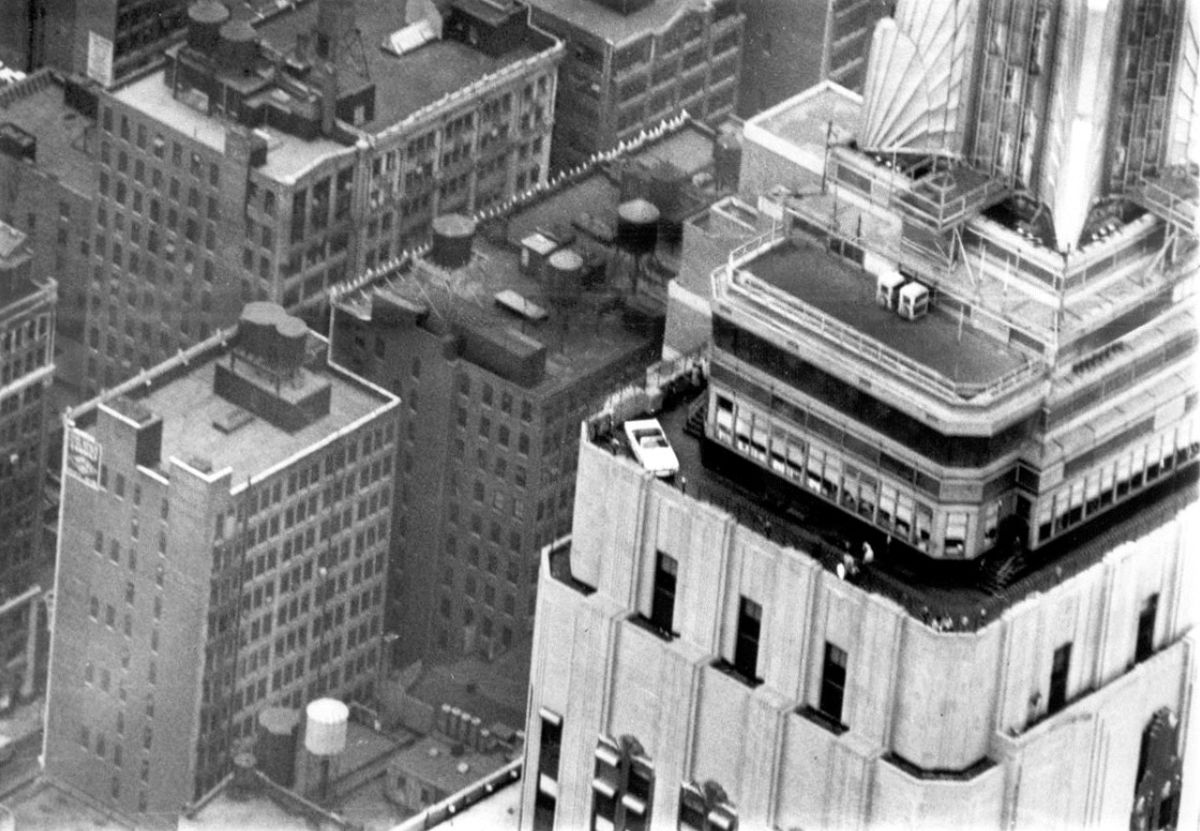 How to lift a Ford Mustang to the observation deck of a 103-story Empire State Building? Note that the skyscraper, built-in 1931, does not have freight elevators. You gonna find the answers if you want to create the most successful ad campaign of that year.
How to lift a Ford Mustang to the observation deck of a 103-story Empire State Building? Note that the skyscraper, built-in 1931, does not have freight elevators. You gonna find the answers if you want to create the most successful ad campaign of that year.
Ford Mustang + Empire State Building = Marketing!
Robert Liery was vice president of the Empire State skyscraper when he made an appointment with William Benton, product promotion manager at the auto giant Ford.
Henry Ford established a car production cycle that the world admired. He organized the beneficial employment system. Ford managers learned not to miss marketing opportunities.
The plan was to benefit both the Empire States Building and the Ford Mustang. This bald marketing move had to raise the visits to the skyscraper and boost sales of the automaker. Benton agreed immediately. Very soon, Ford engineers began to carefully examine the Empire State Building, measuring doors, halls, and elevators. They needed accurate elevator data to understand how to transport the car to the observation deck.
Finally, Ford engineers pondered how to disassemble the 4.5 meters-long Mustang, so have a way to assemble it again on the roof.
Operation ‘Advertisement’
Everything was ready by October 1965. The operation took less than an hour. The engine, gearbox and propeller shaft were removed from the Mustang. The car was cut into four parts, each of which fit the elevator of a skyscraper. Then engineers connected parts using a pin system.
At 11.00, helicopters with photojournalists were already circling over the Empire State Building. The photographs hit the front pages of all newspapers within a few hours.
At about 4.30 p.m. the same day, Ford workers disassembled a car again and transported it to the ground.
The success of the advertising campaign was tremendous: Ford sold 607,568 Mustangs in 1966. It was a record!
We cannot limit ourselves to one photo. Take a look at other pictures that immortalize the process of lifting the Ford Mustang to the observation deck of the Empire State Building.
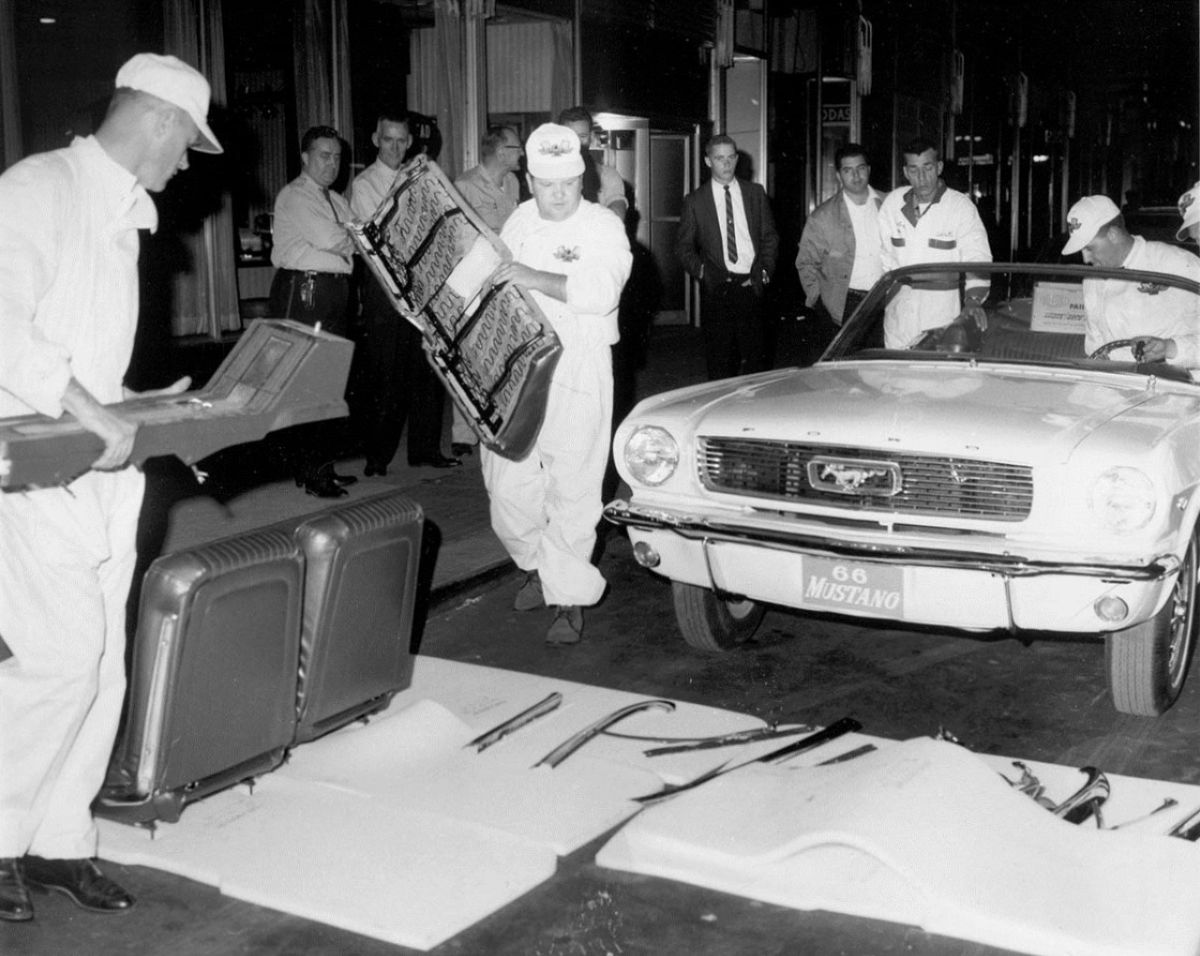
Disassembling the Ford Mustang before lifting it on the top.
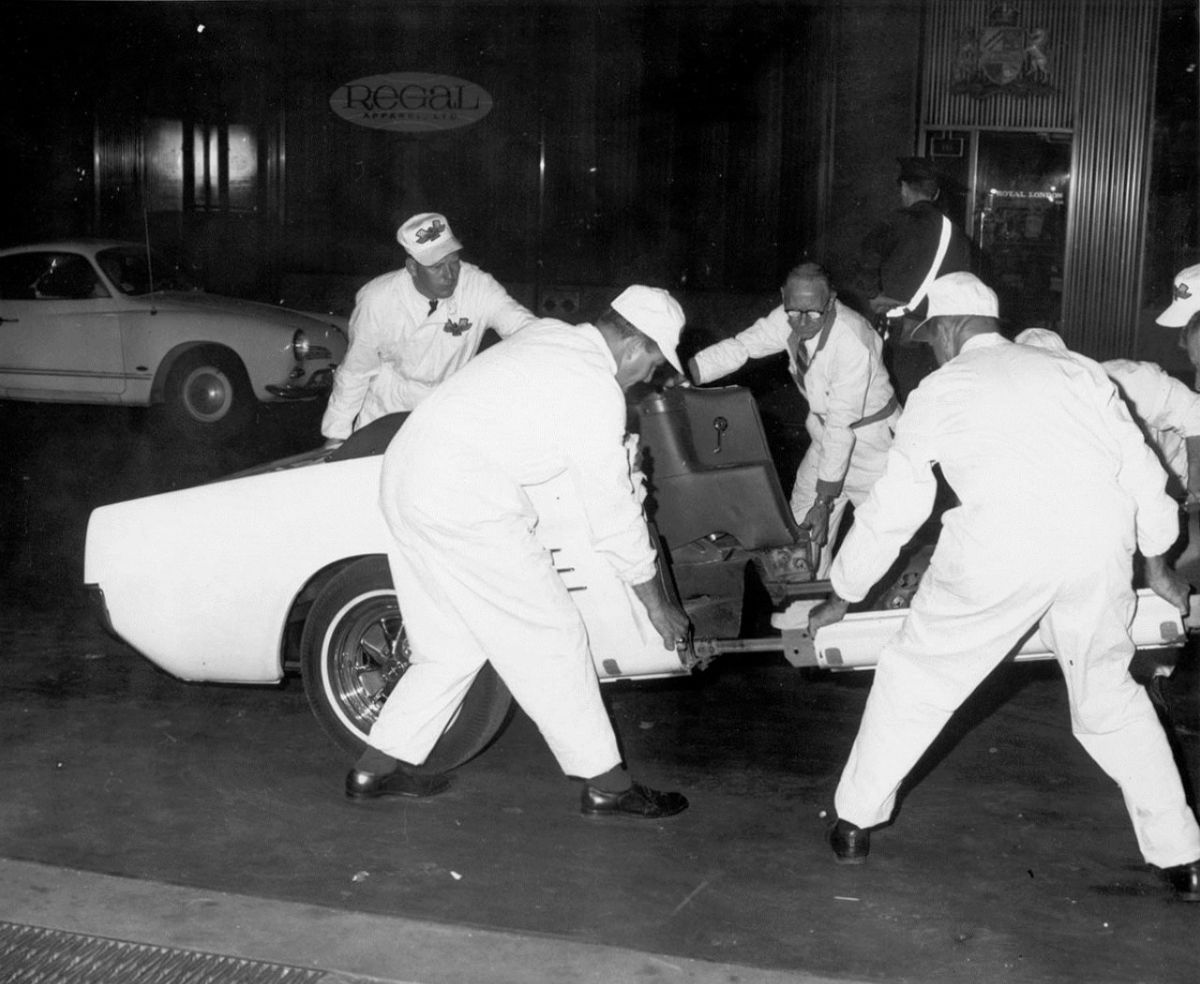
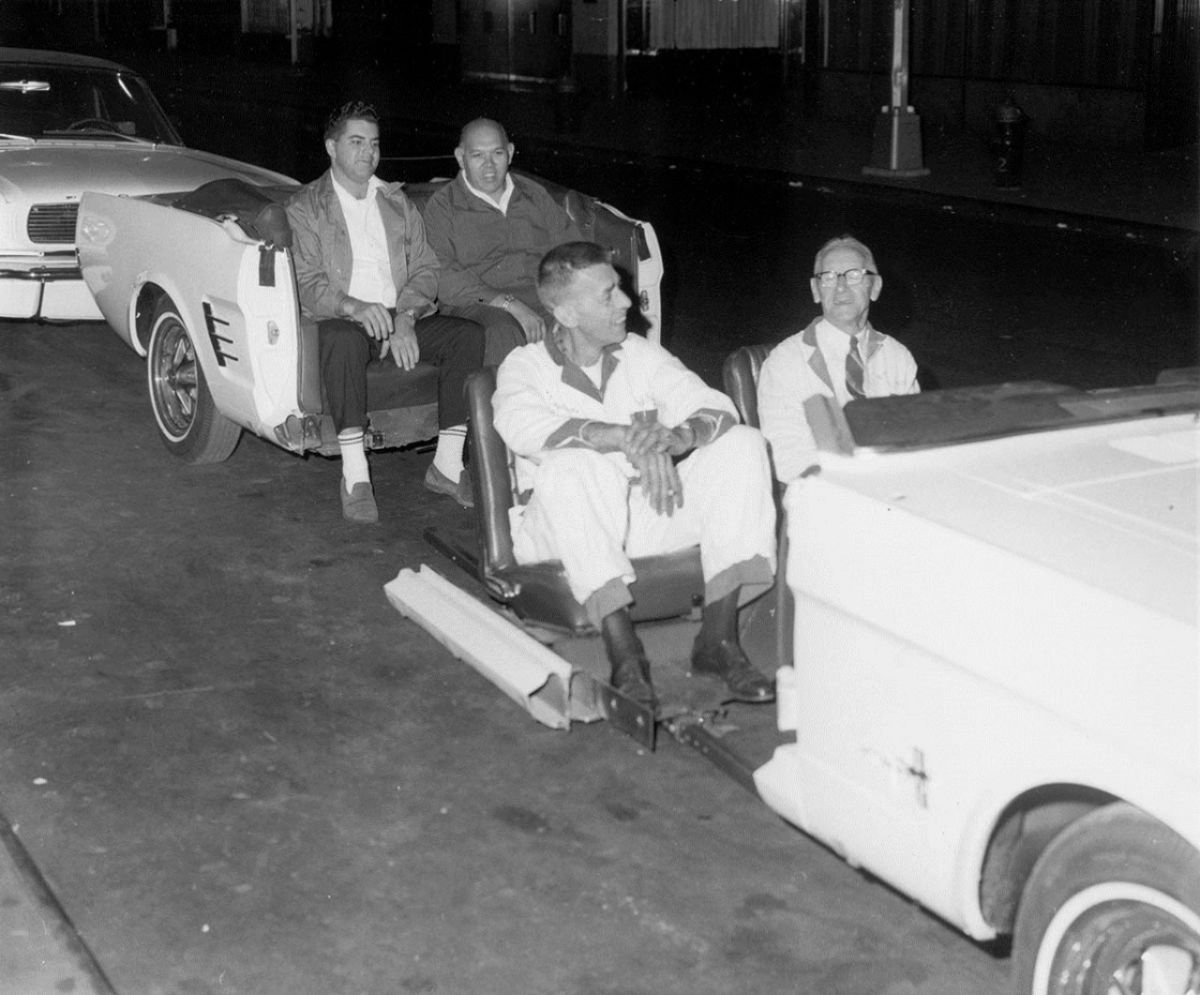
It seems like this car misses some parts
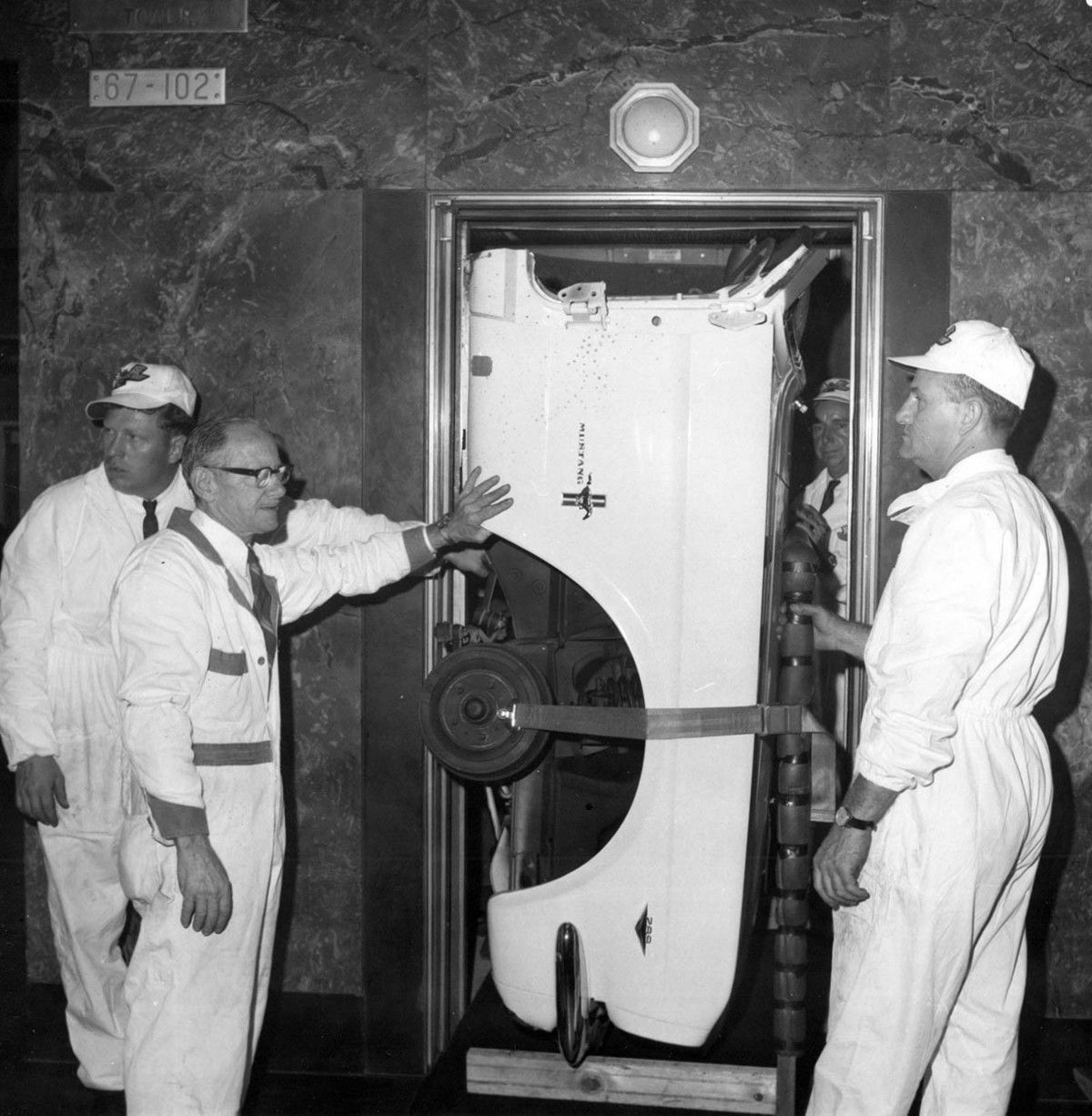
That’s how the car parts in the elevator looked like.
Сообщение Ford Mustang on the Empire State Building, October 1965 появились сначала на Old Pictures.
]]>Сообщение Workers on the cables of the Brooklyn Bridge, October 1914 появились сначала на Old Pictures.
]]>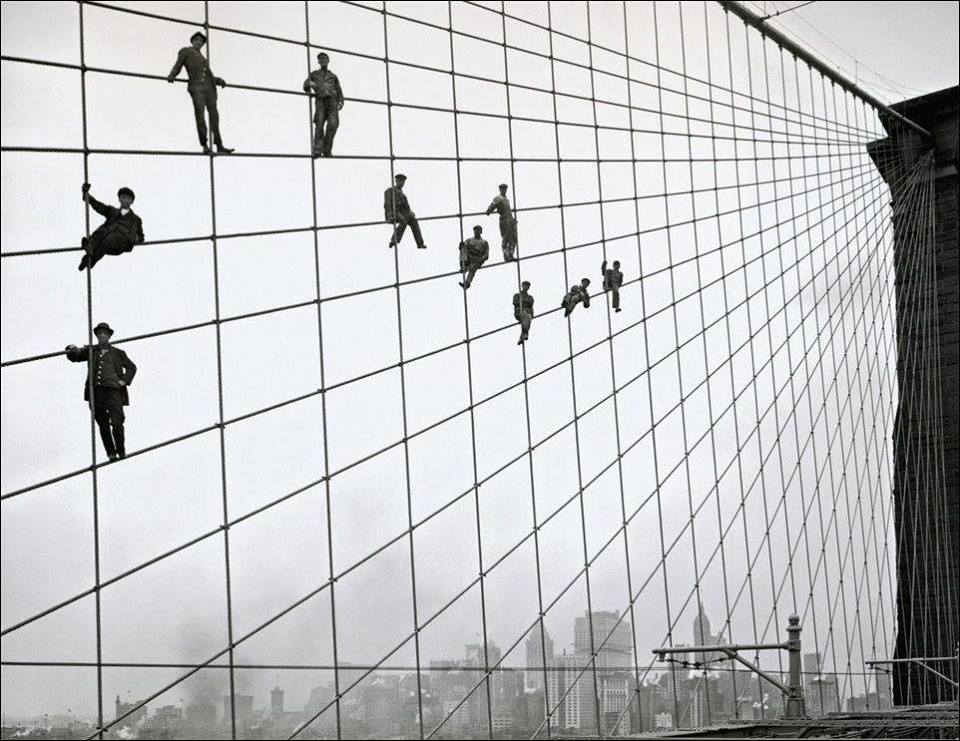
Few people know that about 150 workers died during its construction of the Brooklyn Bridge. But not the lucky ones in this famous picture. These workers demonstrate the hardness and durability of steel cables that were used to build the Brooklyn Bridge.
World-best engineering
The modern viewer may not find anything particular or exciting in the Brooklyn Bridge. But things were different at the end of the 19th century when the Brooklyn Bridge was just being erected. It was a real architectural and engineering gem. Its construction lasted 13 years, from 1870 to 1883. The Brooklyn Bridge became the largest suspension bridge in the world. It also became the first bridge to use steel cables. The Brooklyn Bridge is the classic object of the Gilded Age of New York City.
At the time it was built, the span across the East River connecting Brooklyn with Manhattan was the longest suspension bridge in the world – 5,989 feet (1.825km) in length and soars 119 feet (36.27m) above the river. The Brooklyn Bridge was opened for use on May 24, 1883.
A tragic history behind
The history of the construction of the bridge is closely related to the history of the Röbling family of engineers. We would even call this connection fatal, and we use this word in exceptional cases. So, 61-year-old engineer John Röbling was the first to sign up for the construction of the bridge. It was he who came up with the idea of placing two coastal spans and a suspended part on two massive supports 80 meters high.
The boat that John operated collided with a ferry. The engineer’s leg was smashed, doctors had to amputate fingers. Soon he died of tetanus. Nonetheless, Röbling entrusts the construction to his son Washington, who was also an engineer. But a sad fate awaited Washington too…
Washington Röbling suffered the decompression sickness, which led to paralyzation. Here’s why his wife Emily Röbling had to manage workers during 13 of the construction of the Brooklyn Bridge.
Workers hanging on the cables
Now let’s turn directly to the photograph of the workers on the cables of the Brooklyn Bridge. The picture was taken on October 7, 1914, by Eugene de Salignac. He was the official photographer of the New York Department of Bridges and Factories. Actually, Eugene was not going to become a photographer. At the age of 42, he lost his job and happily accepted the offer of a photographer friend. Here’s how Eugene became a deputy photographer in the department.
Three years later, his friend passed away, and Eugene took his place. His professional duties included visiting construction sites and renovations in New York to immortalize them for the archives and the press.
The workers were painting the cables of Brooklyn Bridge when Eugene came to take some photos. Photo, to this day, is considered a classic of the black and white genre of the early 20th century. Photography experts put it in textbooks as an example of a perfect composition.
Сообщение Workers on the cables of the Brooklyn Bridge, October 1914 появились сначала на Old Pictures.
]]>Сообщение Rare pictures of the Empire state building plane crash появились сначала на Old Pictures.
]]>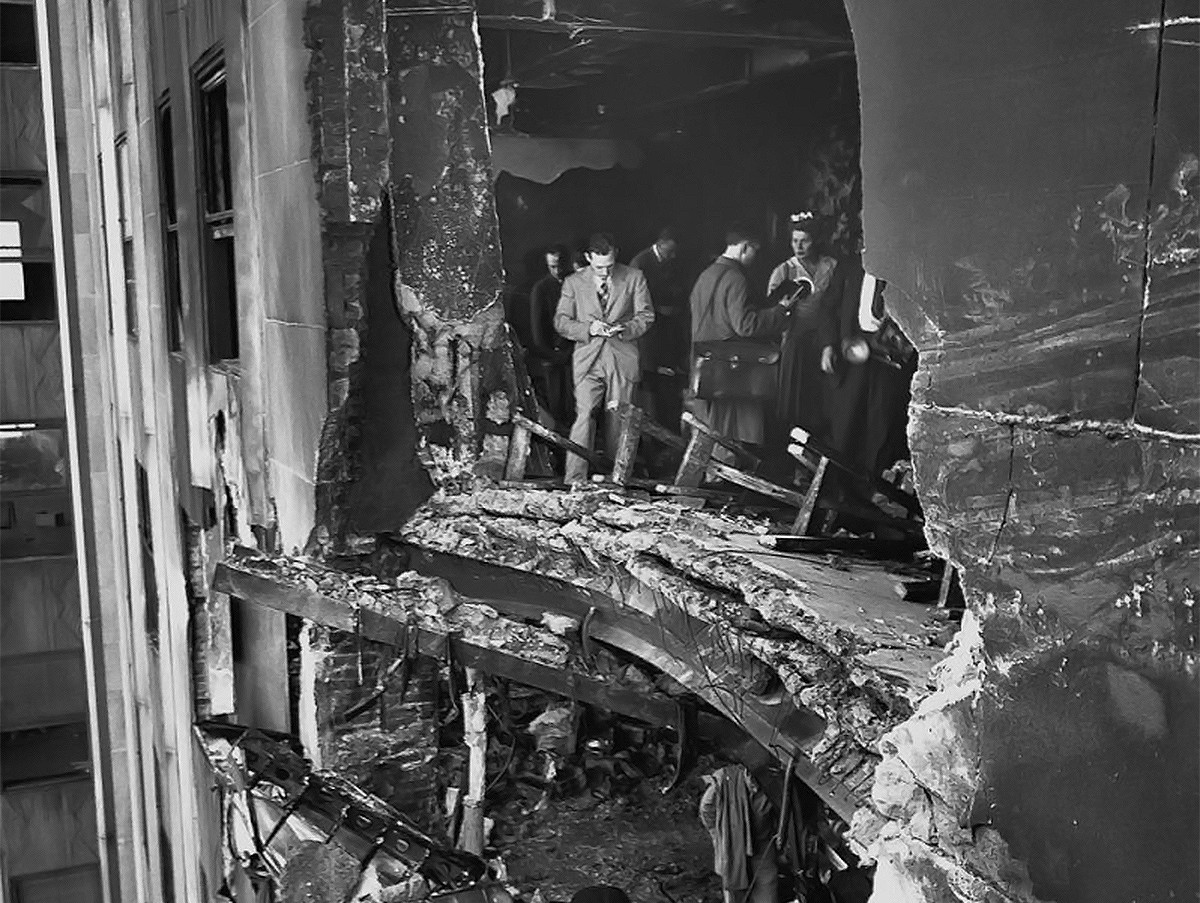 The tragic Empire state building plane crash occurred on July 28, 1945. The B-25 aircraft dramatically rammed the renowned building. The incident took 14 lives.
The tragic Empire state building plane crash occurred on July 28, 1945. The B-25 aircraft dramatically rammed the renowned building. The incident took 14 lives.
A sad and foggy story
This story is well known. But Oldpics loves to retell it every time with new details and pictures. In addition to our various not-so-dramatic photographs of NYC.
World War II was almost over (there was still a month before Japan’s surrender) when the US Air Force bomber lost its focus in the fog. The plane crashed into the New York Empire State Building between 78th and 80th floors.
The building turned out to be harder than the plane. It fell apart. One of the motors flew right through the skyscraper and started a fire in a neighboring house. The second engine crashed into the elevator shaft and also started a fire there (coordinated actions of the firefighters extinguished it pretty soon).
All three pilots, unfortunately, were doomed. The eleven unlucky residents who stayed at the Empire State Building on that day survived the plane crash neither. Ironically, the Society for Supporting War Victims occupied these floors. There was also the National Catholic Council.
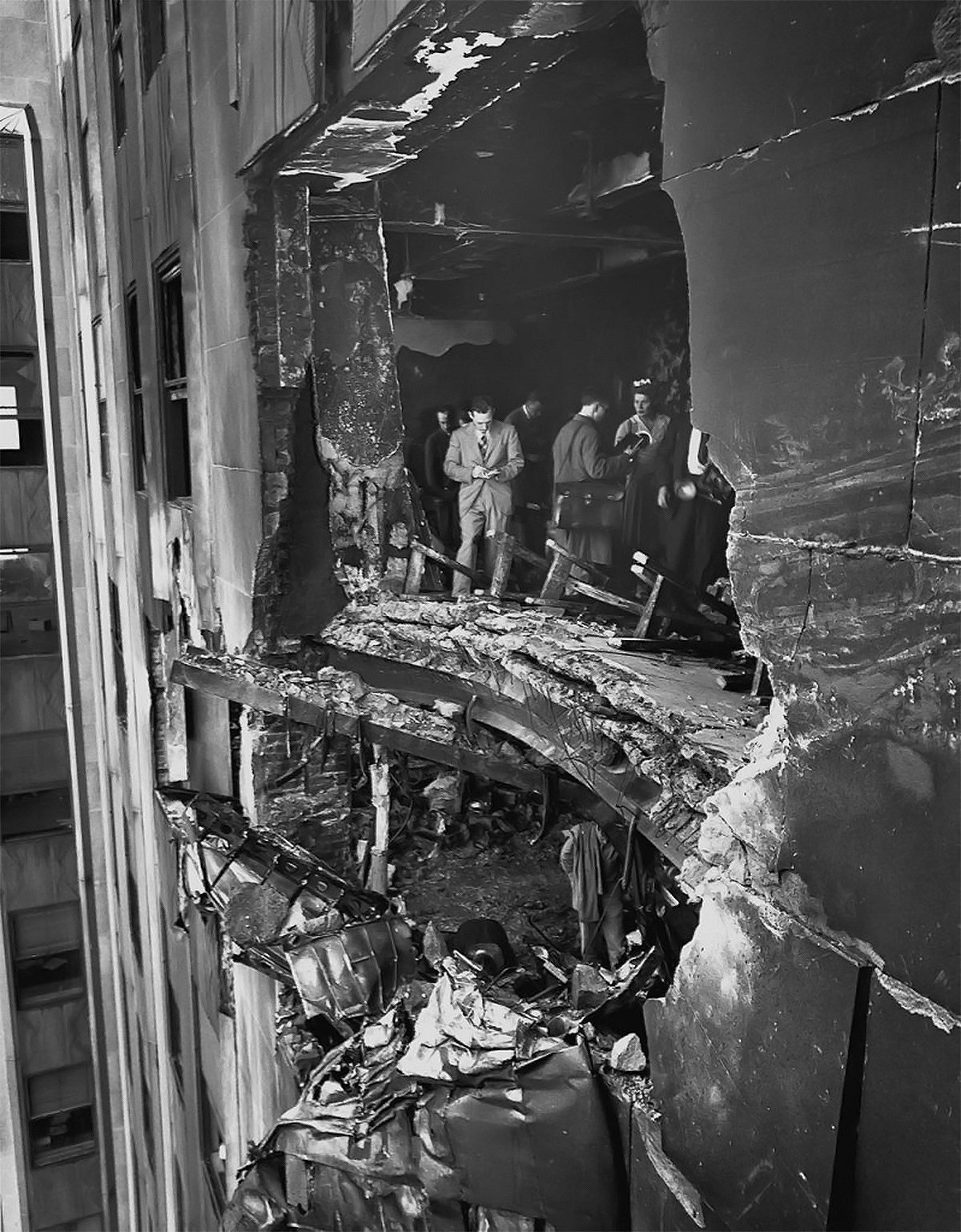
The horrible aftermath.
Empire Building will stand.
Nevertheless, the building’s survivability was the best. The skyscraper was again open to the public and tenants right the next day. Cynical journalists joked that the building got through the incident with minor bruises. Yet it took three months to completely renovate the damaged Empire state building after this plane crash.
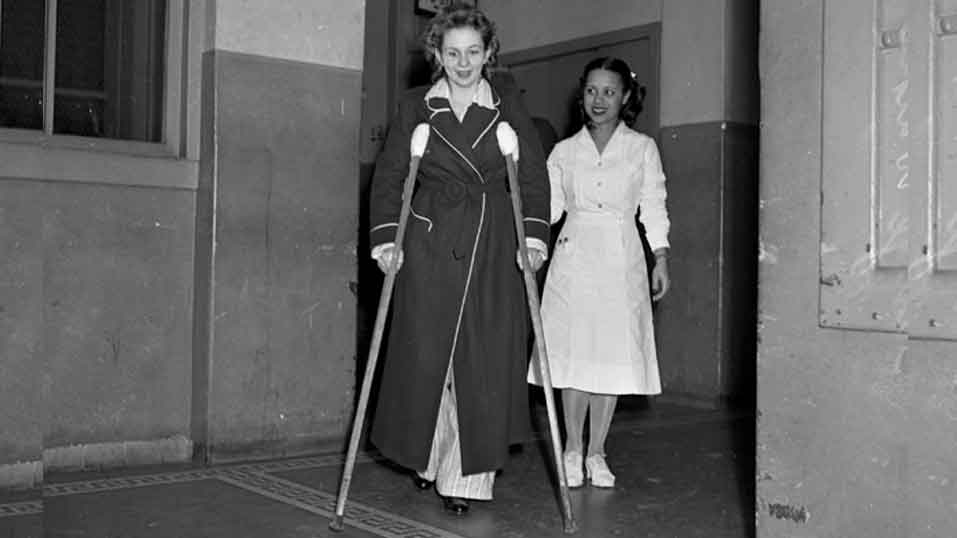
Betty Lou Oliver, a lucky survivor of the Empire State Building plane crash
The lucky crash survivor
The story of the lifter Betty Lou Oliver is impressive. She was in the elevator car on the 80th floor during the crash. Rescuers accidentally put her in the second elevator, but the cables split, and the cabin flew down 75 floors (according to other sources – 79). Betty Lou Oliver miraculously survived! None survived such a fall before or after this day.
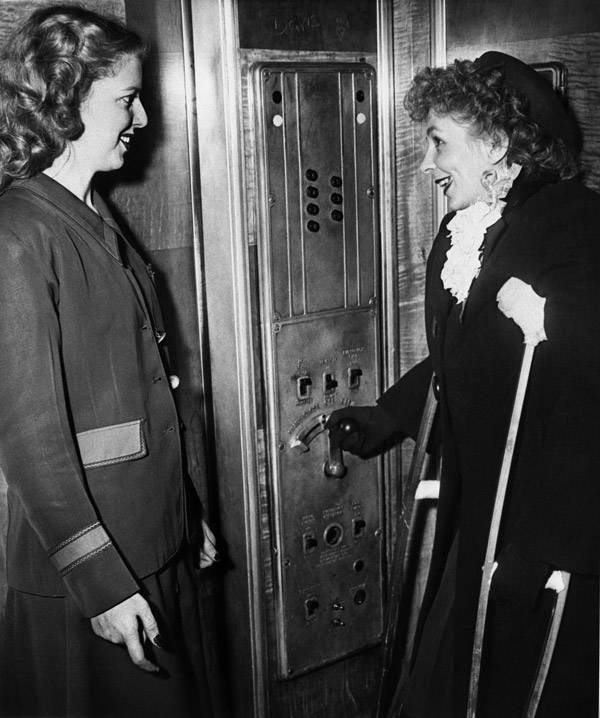
The recuperation of Betty Lou Oliver took several months. After all, she decided to returns to the scene of the tragic accident. Dec. 2, 1945.
Why did the Empire state building plane crash happen?
The crew commander William Smith decided to land during zero visibility. At the same time, he incorrectly interpreted the commands from the ground. He made a right turn instead of a left after the Chrysler Building (77-storey tower, which was the tallest one before the Empire State Building). When the pilot realized this mistake, he conducted an evasive maneuver. But he worsened the situation – one of the engines stalled, and the accident became inevitable.
Empire state building plane crash could take many more lives. But thanks God, it was a day off.
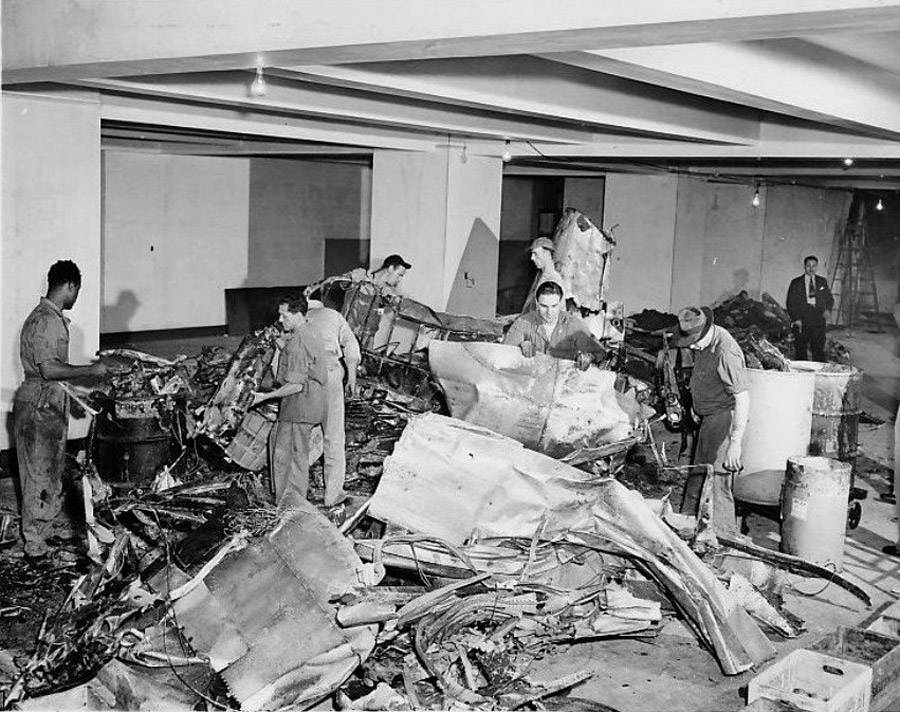
Workers remove the remains of the B-25 Bomber on the 78th floor. 1945.
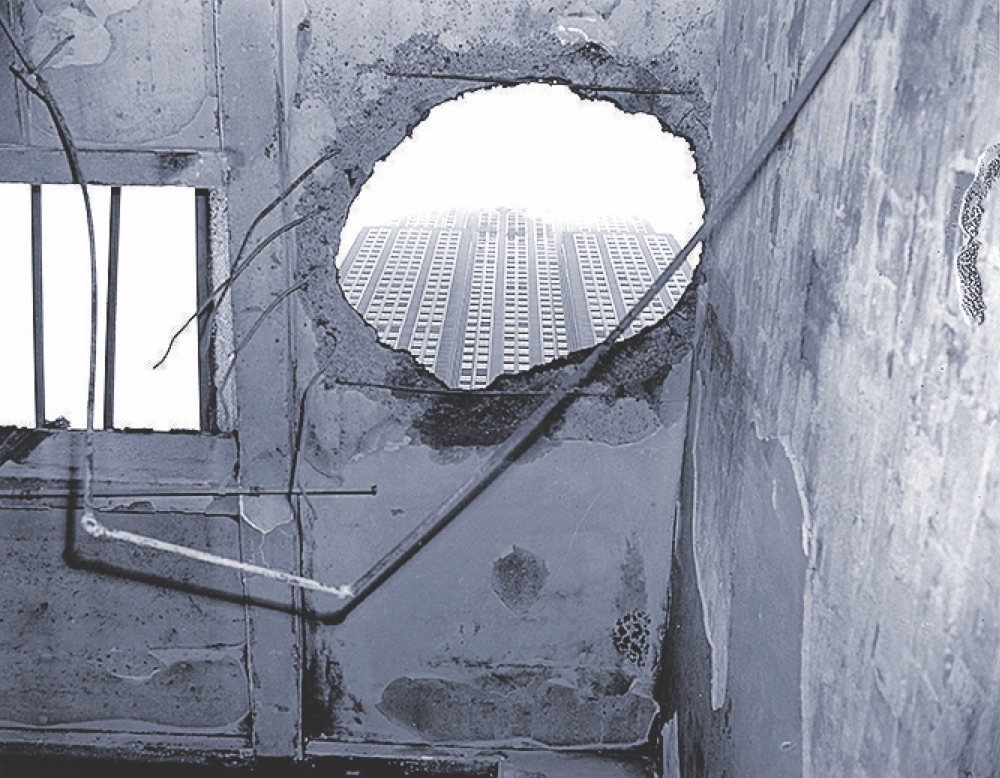
The whole in the roof of the Penthouse Studio.
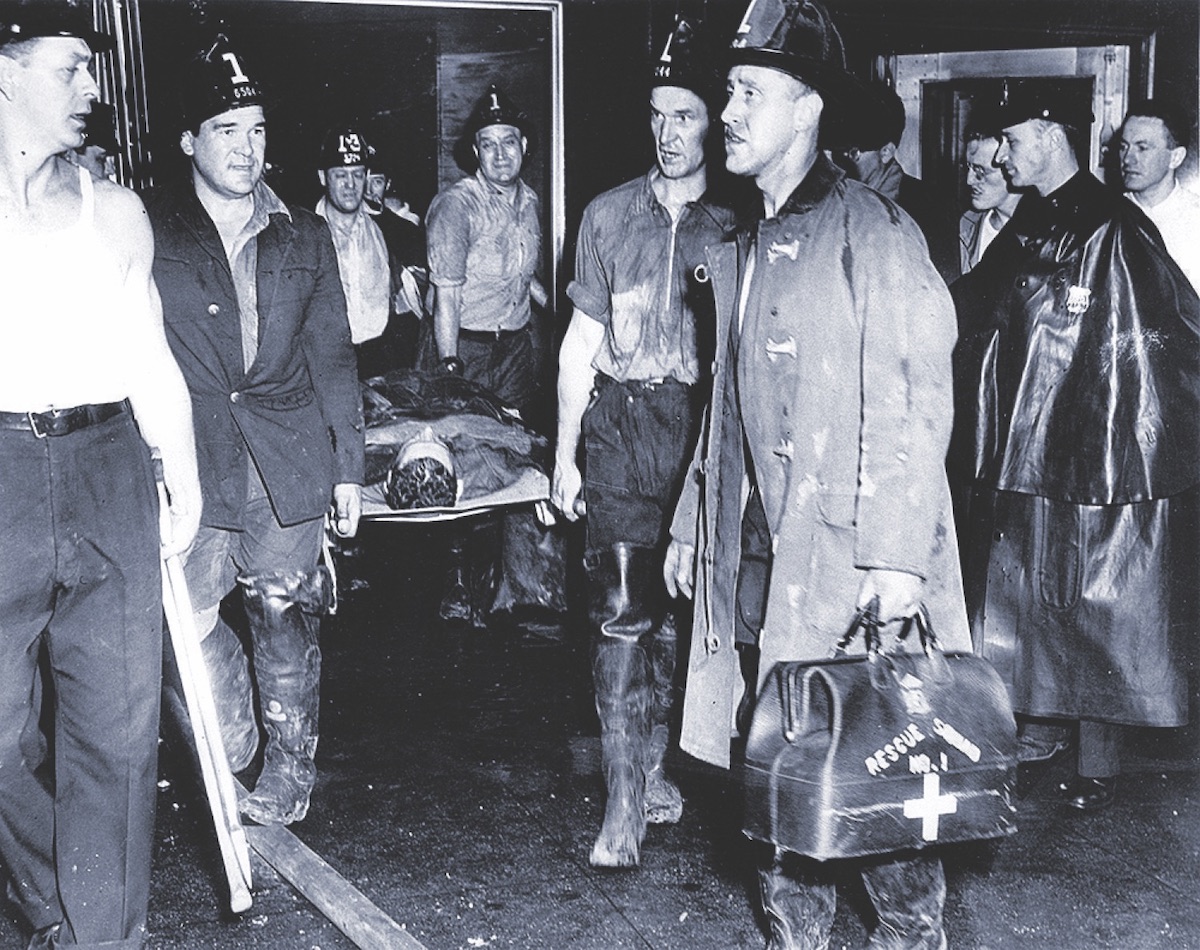
Firemen and medical workers could get only to the 60th floor by elevator. They had to walk and carry all the ammunition the rest of the way up.
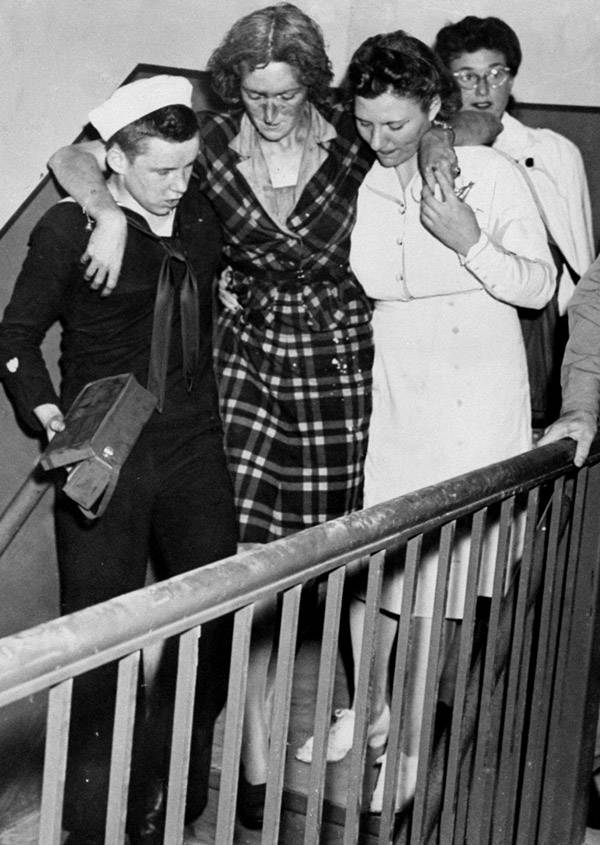
The injured woman going downstairs at the Empire State Building. July 28, 1945.
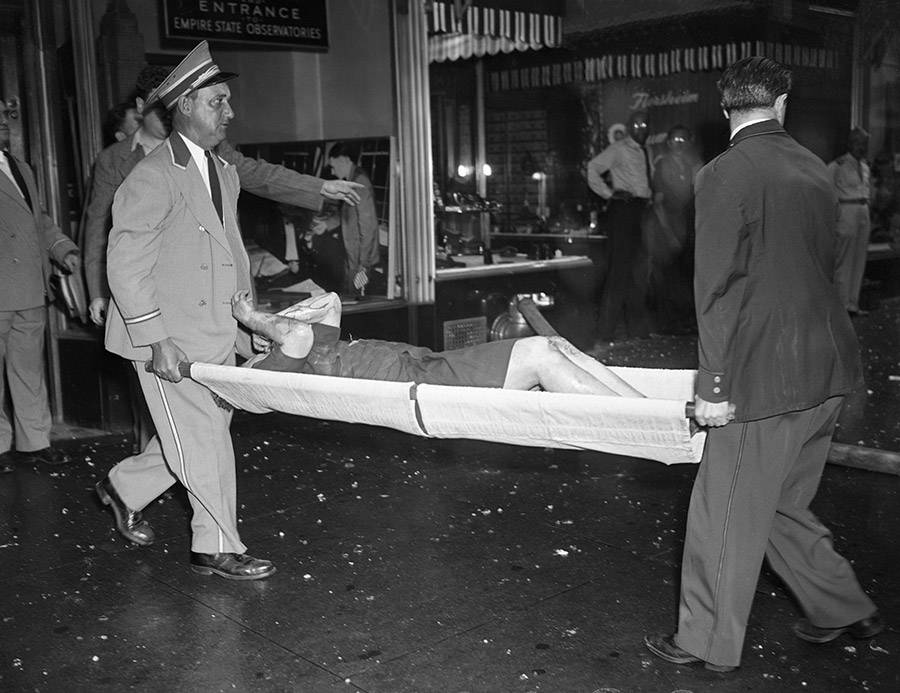
An injured woman getting out of the crash site. July 28, 1945.
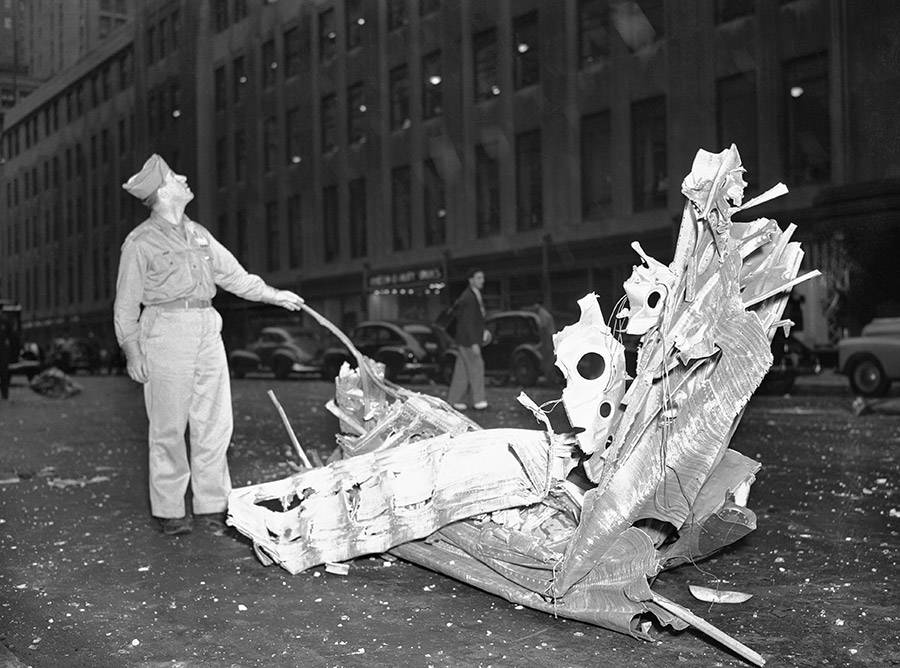
Remains of the B-25 Bomber near 33rd Street. July 28, 1945.
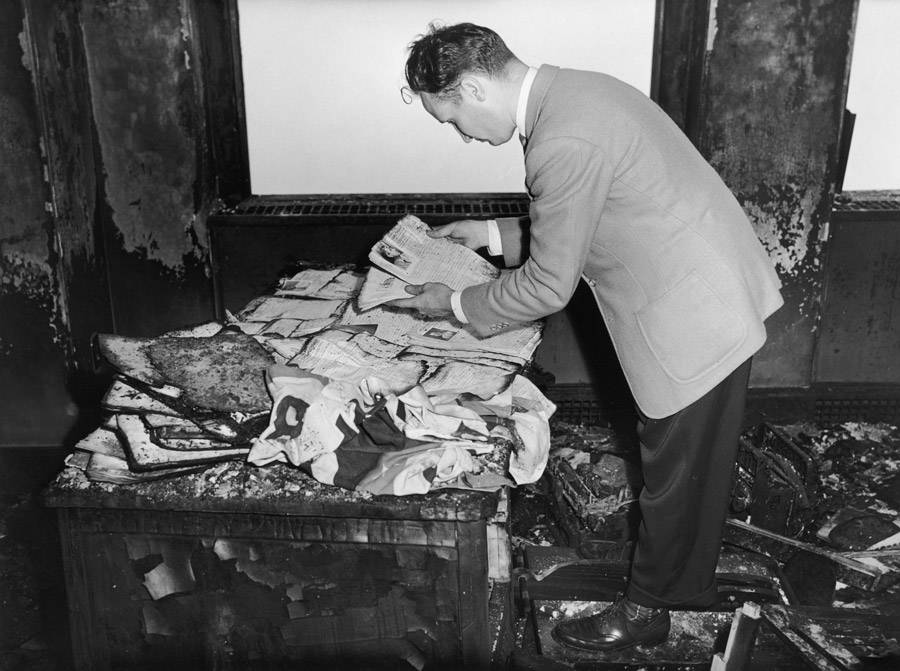
A man inspects papers in a room in the Empire State Building after a B-25 Bomber crashed into the side of the building. July 28, 1945.
Сообщение Rare pictures of the Empire state building plane crash появились сначала на Old Pictures.
]]>Сообщение Photos of the construction of the Statue of Liberty, 1885 появились сначала на Old Pictures.
]]>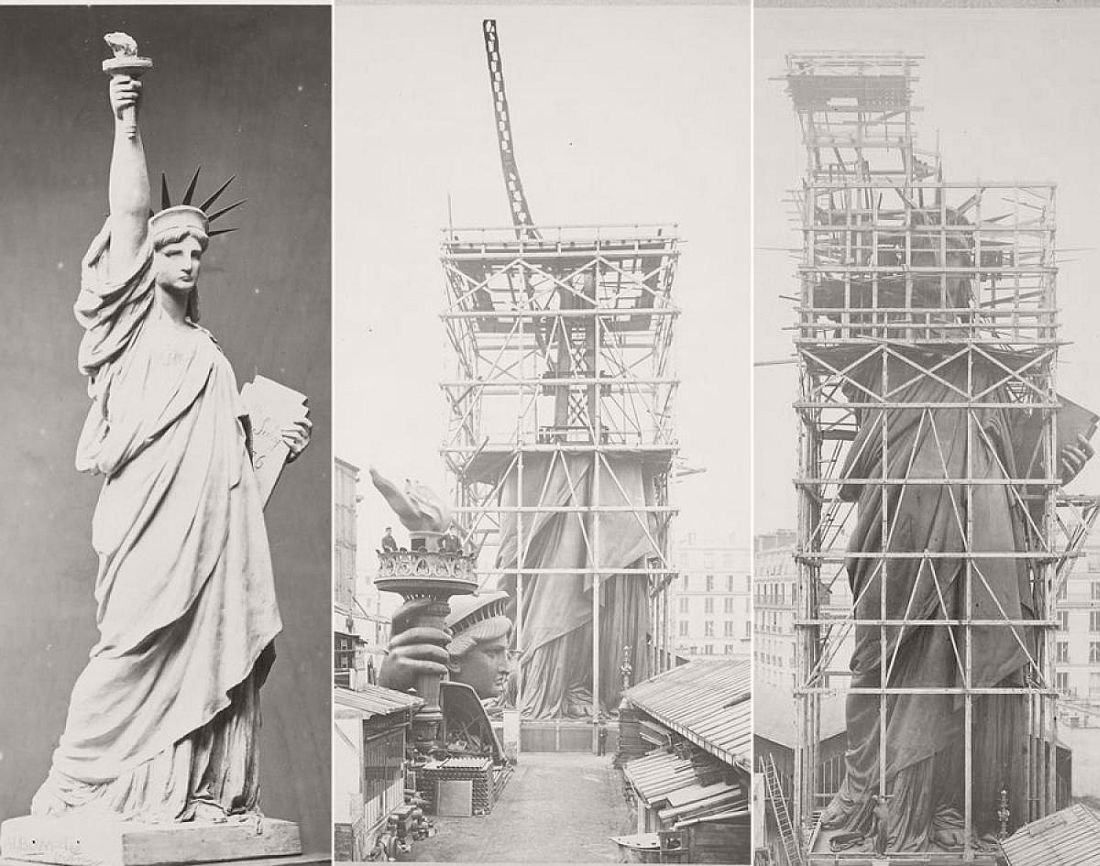 This set of rare pictures shows the first days of Statue of Liberty on the land of New York City before and during the construction. The idea of a monumental symbol of Liberty belongs to famous France humanists, Édouard de Laboulaye. Once he spoke about this idea to another antislavery activist, architect Frédéric Bartholdi, it had several attempts to be implemented.
This set of rare pictures shows the first days of Statue of Liberty on the land of New York City before and during the construction. The idea of a monumental symbol of Liberty belongs to famous France humanists, Édouard de Laboulaye. Once he spoke about this idea to another antislavery activist, architect Frédéric Bartholdi, it had several attempts to be implemented.
Bartholdi had a similar idea, and at first, a plan to build Progress or Egypt Carrying the Light to Asia was proposed to Isma’il Pasha, Khedive of Egypt. Still, the expenses were too high for Egypt’s economy at that moment. Roman goddess Libertas found her embodiment as a dedication to the American struggle for Liberty and was inspired by two female figures, symbolizing Liberty: American Columbia and French Marianne. The image of Liberty already was on the American coins of the time, as well as was implemented in the architecture of the United States Capitol Building.
France sponsored the Statue itself, and the American side provided the basement.
The act of the gif coincided with the US Independence Day, July 4, 1884.
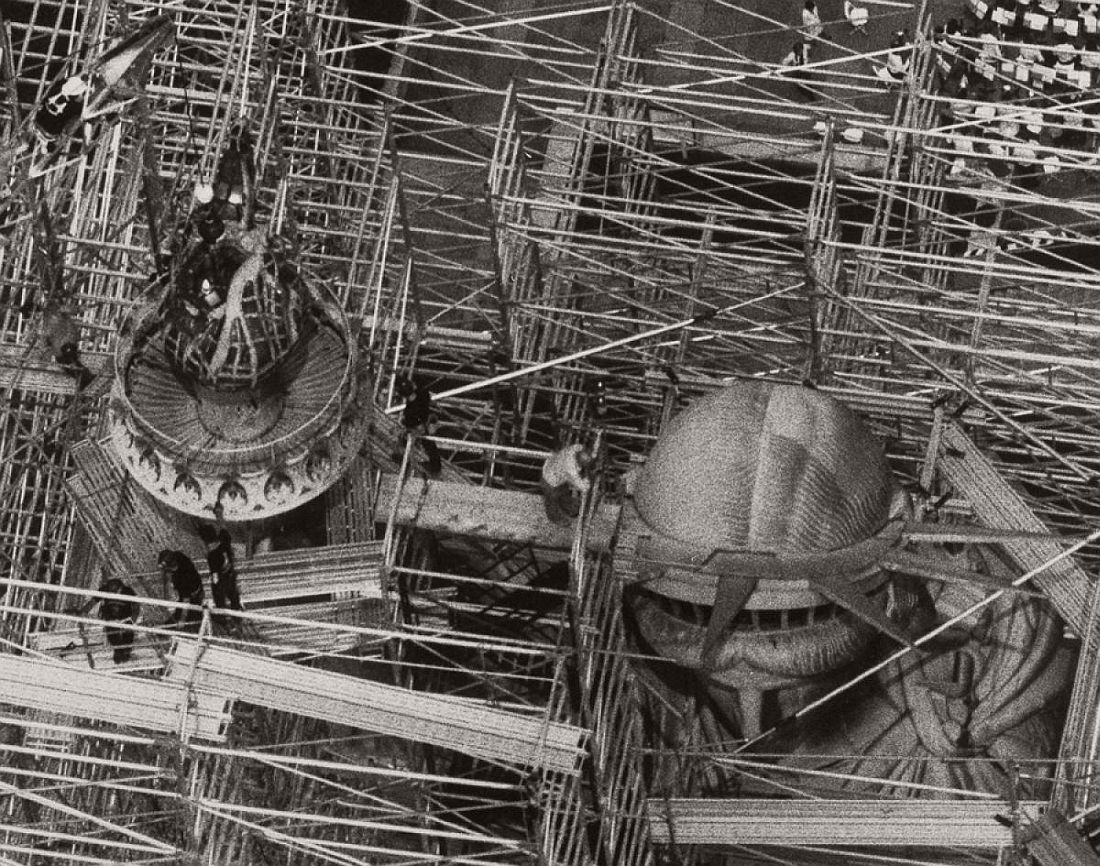
The cover was created by thoughtful modeling with clay, and performed by Bartholdi. There are many versions of his inspiration for the design: some say that the face belongs to his mother, another – Isabella Boyer, widow of Isaac Singer. An old episode lured the posture he saw during a street fight in Paris in 1851. He remembered the girl from the barricade, in a light dress, and with a burning torch in hand, which became the prototype of the Statue.
Gustave Eiffel performed the engineering part of making the colossal figure stable and strict.
Statue was completed in 1884 and successfully shipped to New York in 1885. It was transported in pieces (350 items) by 214 boxes on the steamer Isère. The total weight of the Statue is 450,000 pounds (225 tons), 179,200 pounds (81,300 kilograms) of copper was used in the Statue. 250,000 pounds (113,400 kilograms) of iron.
A crowd of more than 2,000 people welcomed the ship. But the pedestal works were still going on. Till 1885 American side gathered 80% of required funds: $102,000 instead of $120,000. As a result, the building of the pedestal lasted until 1886.
Bartholdi started the Statue reassembling right after the pedestal was ready. All pieces of steel framework anchored in the concrete on a stand, and the skin of the statue was attached step-by-step. An interesting one: there were no injuries or lethal accidents during construction.
Bartholdi’s idea was to put the lights on the torch’s balcony, but the Army Corps of Engineers prohibited this plan, due to possible interruption of the vision of ships’ pilots.
So, the lights were made on the torch. To provide electricity to the island, and the Statue, A power plant was built.
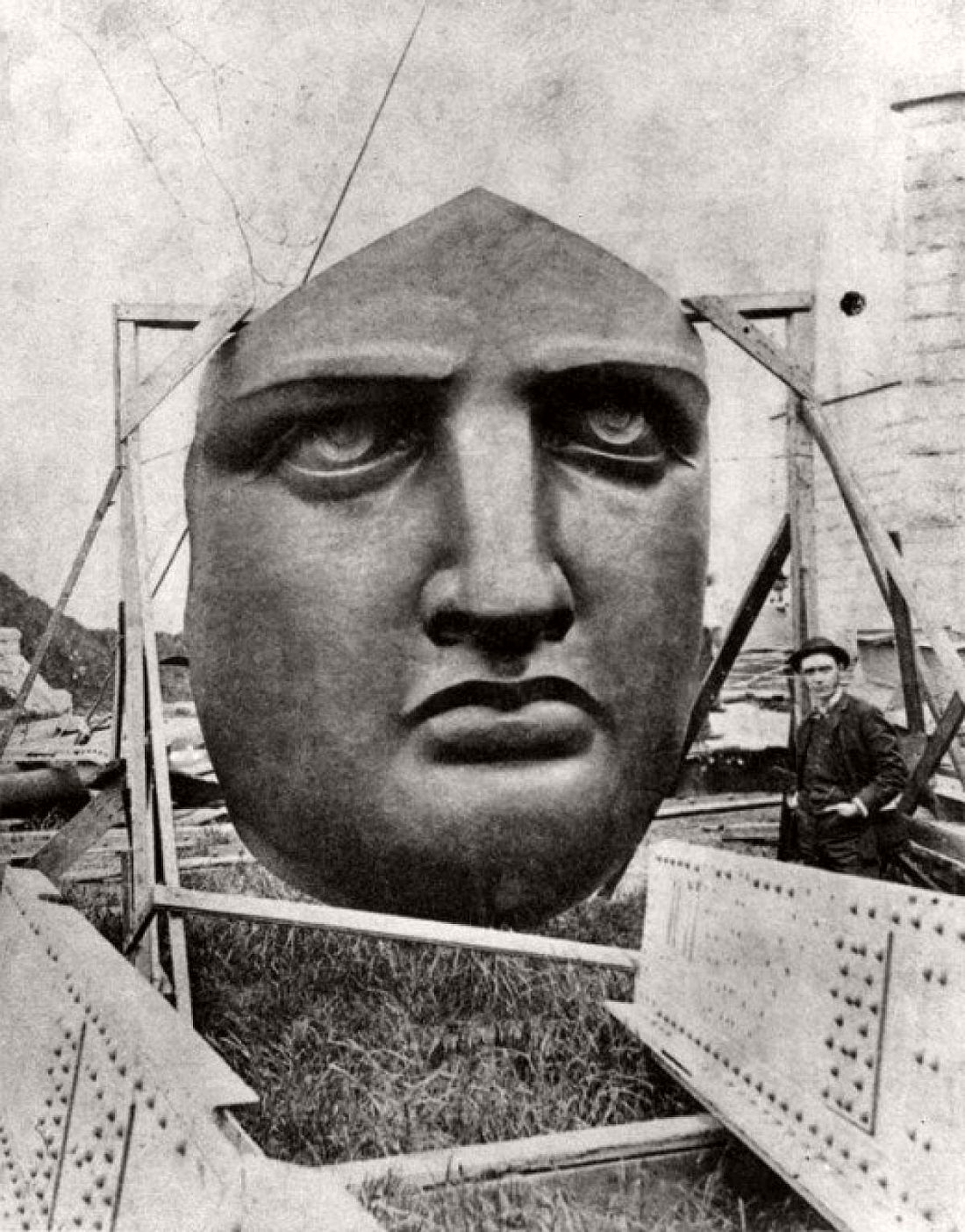
Unboxing the Statue of Liberty, 1885
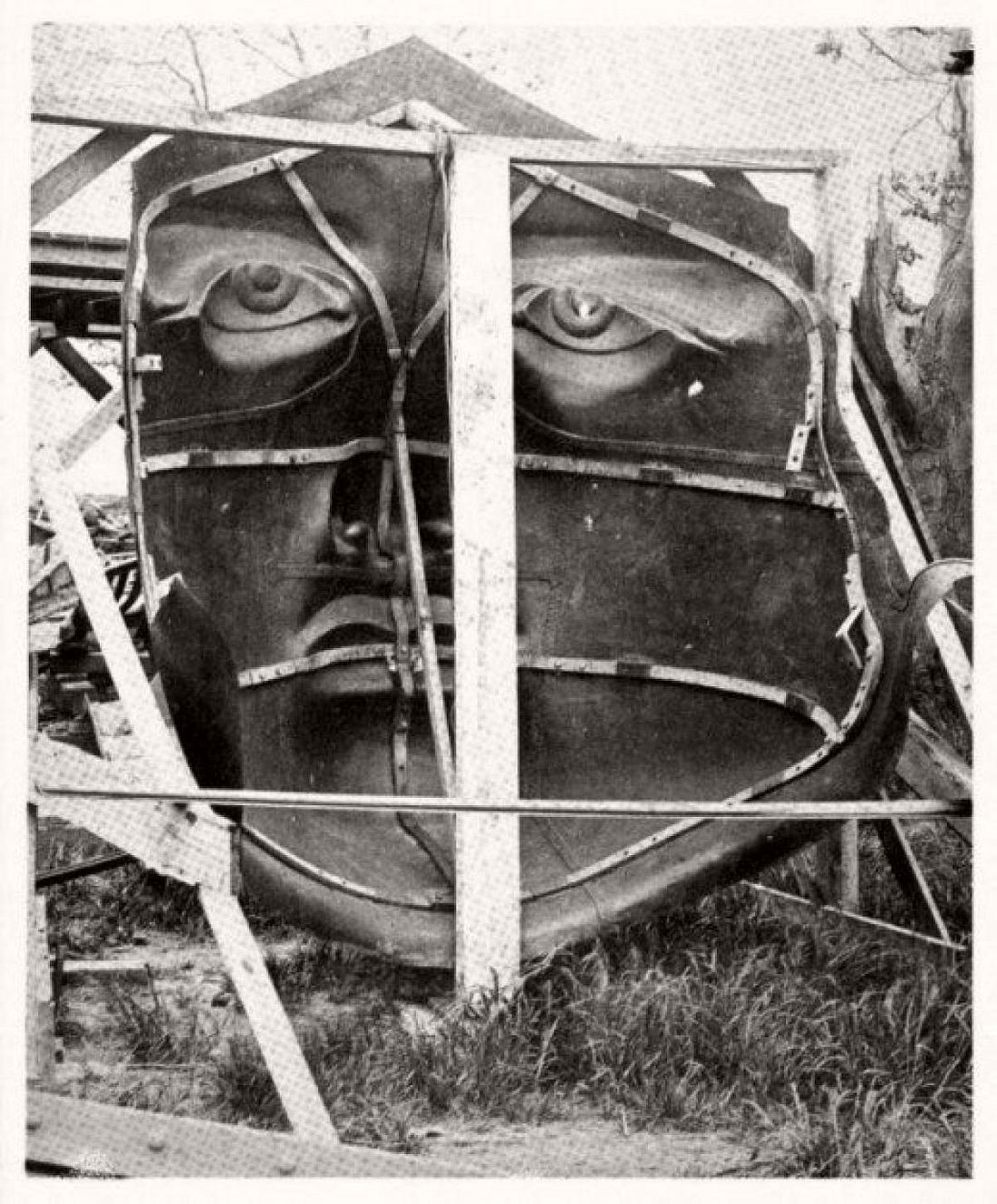
Behind blue eyes of freedom
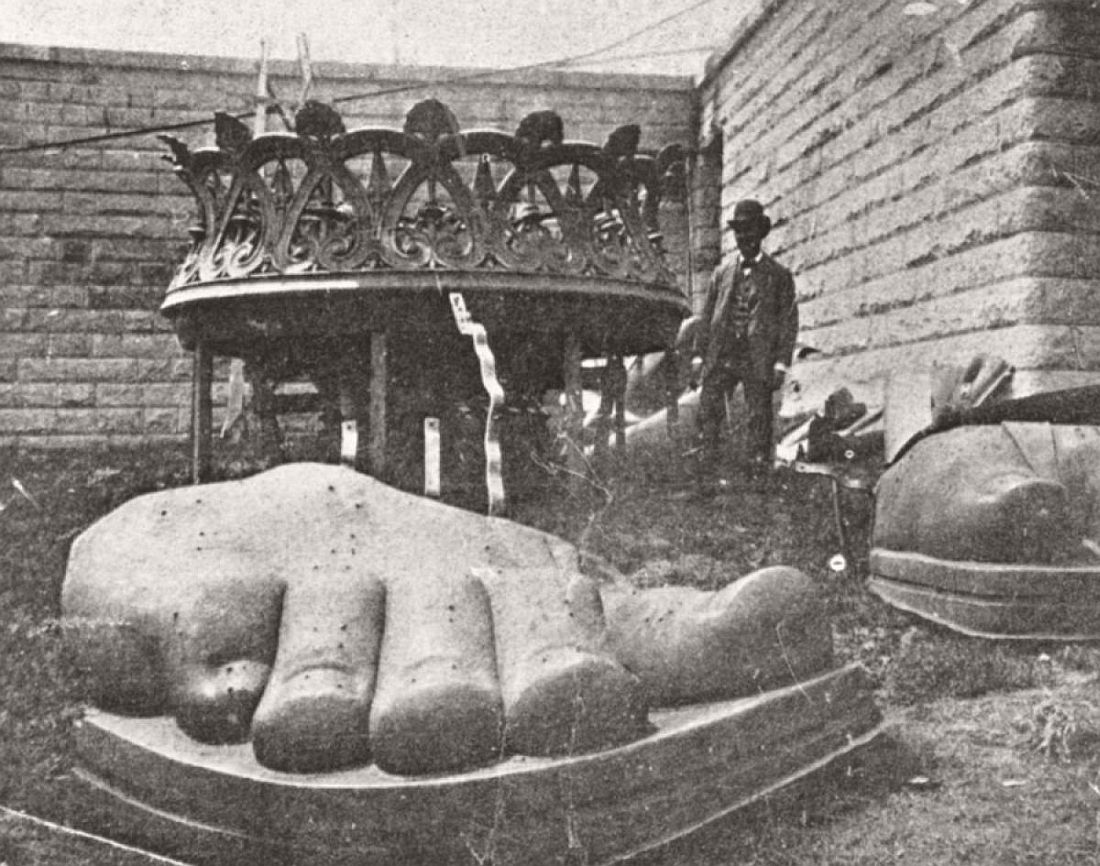
Statue of Liberty foot before assembling
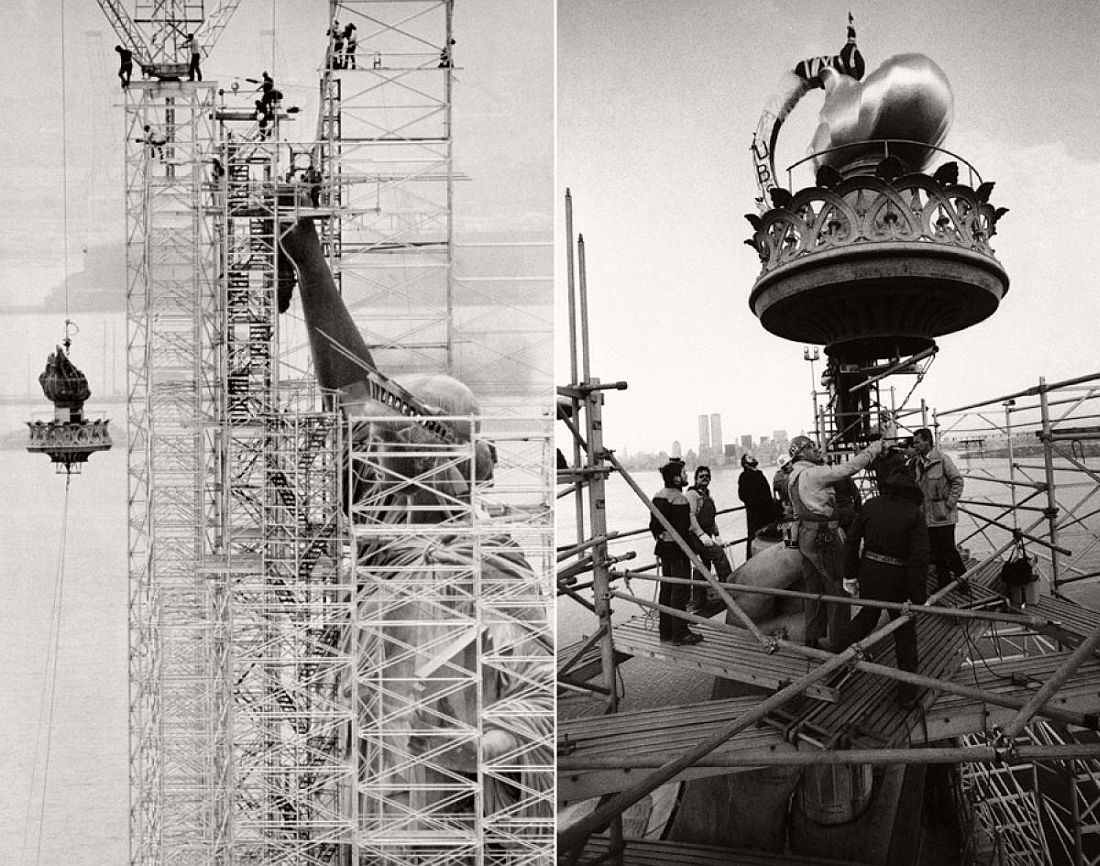
Construction and Reconstruction (the 1980s) of the Statue Liberty
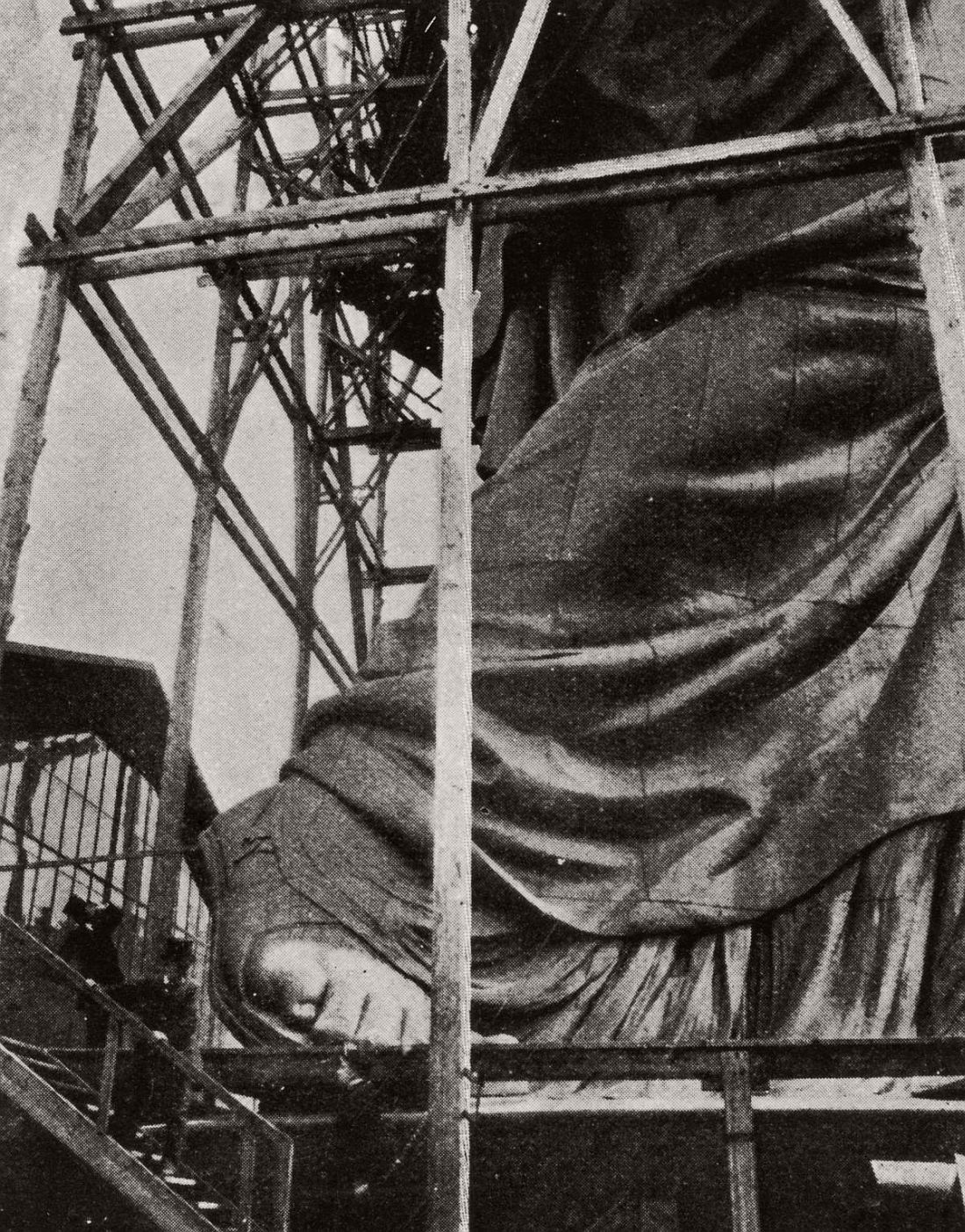
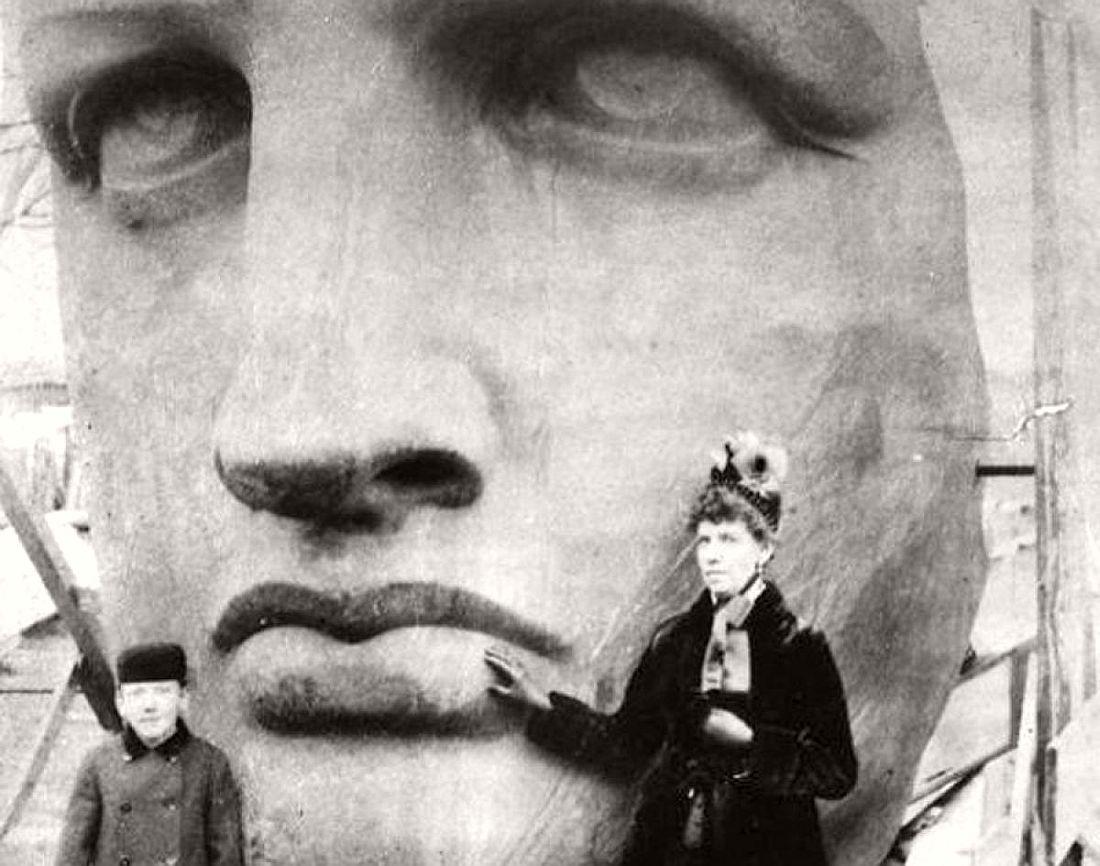
Сообщение Photos of the construction of the Statue of Liberty, 1885 появились сначала на Old Pictures.
]]>Сообщение Early fashion photos by Richard Avedon появились сначала на Old Pictures.
]]>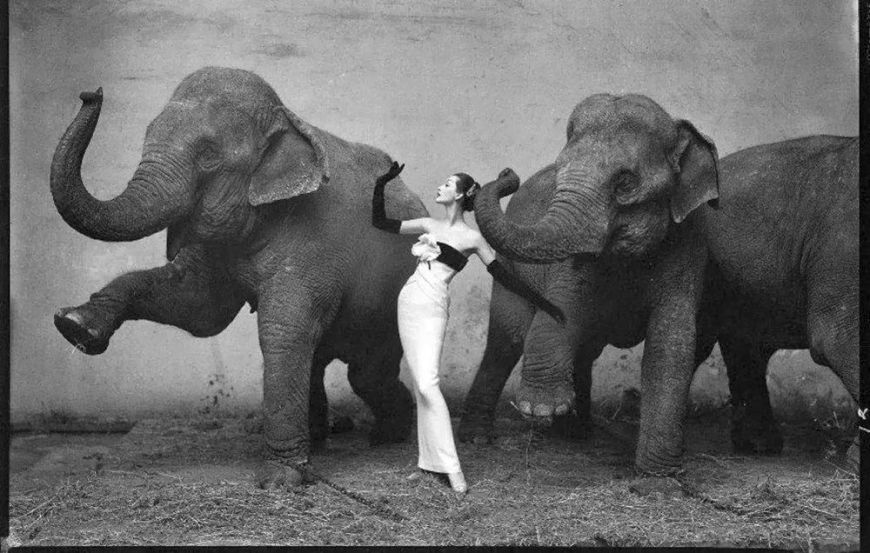
The same photoshoot of Dovima with elephants but in a different dress
Richard Avedon’s name and his photos used to be a synonym to the glossy, fashion photography. Celebrities dreamt of appearing in the focus of his camera because it was paramount for the heroes of the magazine’s gossip pages. Avedon called his photo technique a reductionism – cutting off any tinsel and all non-essential elements in his art; his manner – “brevity of the perfectionist,”; and his gaze was compared to a bolt of lightning. His works are familiar to you, even if you do not remember the name of their creator: black and white gamma, a minimum of unnecessary details in the frame – only people.
Richard Avedon had a talent to turn people into “symbols of themselves.” He photographed many of his famous contemporaries (politicians like Dwight Eisenhower and Hillary Clinton, artists like Pablo Picasso and Andy Warhol, celebrities like Charlie Chaplin and Bjork). Avedon never hesitated to focus his camera on ordinary people too. He traveled from ocean to ocean to make portraits of unknown fishermen and miners, waitresses, and truckers.
Read more: Stolen moments in photos of Henri Cartier-Bresson
His works are a dialogue with the model, the viewer, with himself. “My portraits are more about me than about subjects of my photography.” Not everyone liked his unusual and passionate approach to filming, but he certainly did not leave anyone indifferent. So who was he, the “creator of celebrities,” with whom an entire era in the history of fashion photography is connected? Let’s take a look at the early period of Richard Avedon’s life, starting with his Harper’s Bazaar appearance till the late 50s.
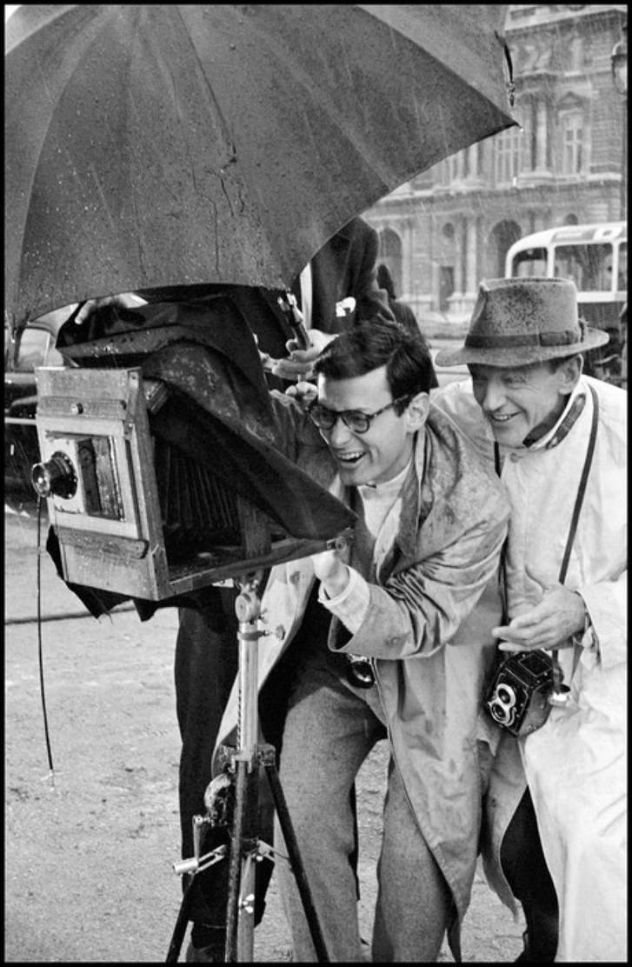
Sometimes even rain helped Richard Avedon to make the great photos.
Childhood in style
Richard Avedon was destined to connect his life with fashion and style. He was born in New York, where his father had a women’s clothing store on Fifth Avenue. Young Richard spent a lot of time while leafing fashion prints like Harper’s Bazaar or Vogue. “I started photographing when I was a teenager. My first model was my little sister, and I’ve tried to copy the beautiful photos from the glossy magazines made by Steichen, Munkachi, and Maine Ray. Louise was amazing with perfect skin, beautiful long neck, and such bottomless brown eyes … Later, when I worked for real with Doreen Leith, Eliza Daniels, Audrey Hepburn, their dark hair and eyes reminded me of Louise.”
Read more: Life story and the best photos of Alfred Stieglitz
Avedon tried himself as an editor and even studied literature in the university, but he couldn’t dodge the destiny of the cameraman. Later, Richard embodied his love of literature in portraits of famous writers and poets of that time (with pictures of Truman Capote, Joseph Brodsky, Isak Dinesen, Ezra Pound, Marianne Moore, and many others).
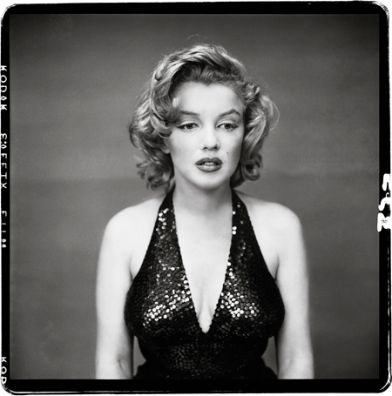
Marilyn Monroe, New York City, 6 May 1957
Avedon joined the US fleet as an assistant photographer, making a “photo on documents” for recruits. He continued the professional photographer’s shooting ads for his father’s store, and, after all, dared to send his portfolio to Alexey Brodovich’s school. This famous artist and designer, a well-known art director of Harper’s Bazaar magazine, recognized the vast potential in photos made by young Richard Avedon. While all fashion editors rejected Avedon’s “beach” series (in which he portrayed his haute couture models barefoot, disheveled, falling into the sand at the very ankles of their beautiful long legs), it was Brodovic who published these pictures in Harper’s Bazaar.
A glossy start
Avedon’s career skyrocketed after publication in Harper’s Bazaar. While attending Brodovich’s workshops, Avedon met with Irving Penn. Critics often note the characteristic features of their style: both photographers practiced the expressive minimalism of studio fashion shootings. However, while Penn was embarking on bold and strange experiments (for example, filming for a fashion magazine of Aboriginal islanders in military armor), Avedon refrained from anything that could interfere with the idea of purity and simplicity characteristic of his work.
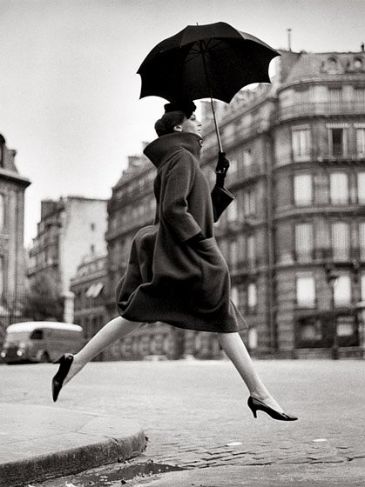
Famous Richard Avedon photos: Homage to Munkacsi, Carmen, coat by Cardin, Place Francois-Premier, Paris, August 1957.
Avedon street photographs of those years were dominated by aerial models in fluttering outfits from famous couturiers, and young ladies in unusual poses, with eyebrow strings, pearl strands became symbols of the new look created by Christian Dior. These were the 40s: the heyday of the glossy publications Vogue and Harper’s Bazaar, the beginning of fashion photography as we know it, new forms, a unique style.
Fashion integration
Avedon tried to merge fashion and real-life, taking his models from the studio to the streets, to cafes, casinos, museums, and theaters. The everyday context only emphasized the luxury and dazzling brilliance of the photograph. Avedon focused on people themselves, paying less attention to fashion. Suzy Parker, flying on a roller skate on Paris Concorde Square, will say about Avedon: “He was the most wonderful person in this industry because he was the first to understand: models are not just cloth hangers.”
Indeed, his models do not look like beautifully dressed up dolls. They are real women, beautiful, elegant, unique.
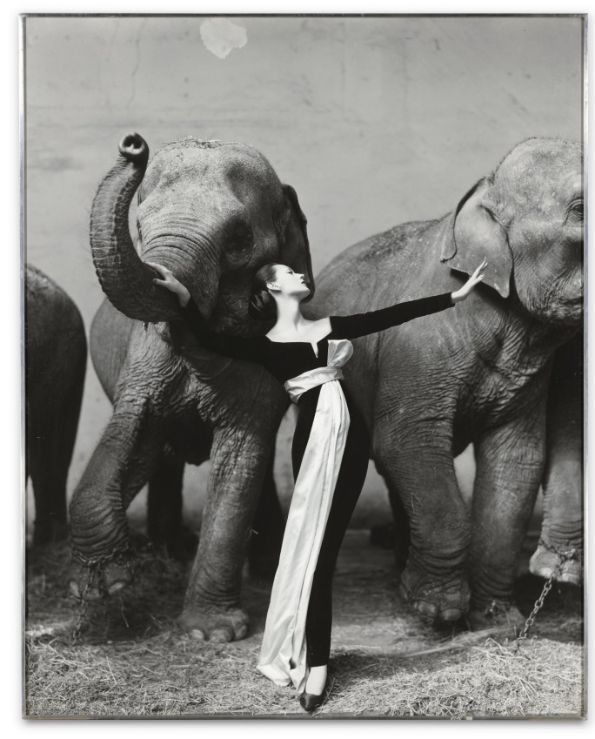
The famous photo ‘Dovima with elephants’
The story of Dovima with Elephants
The 50s did not change Avedon’s techniques. He mastered the art of unexpected environments in his fashion photos. And the most recognizable photoshoot of that decade will capture Dovima in a dress from a young designer Yves Saint Laurent, surrounded by African elephants.
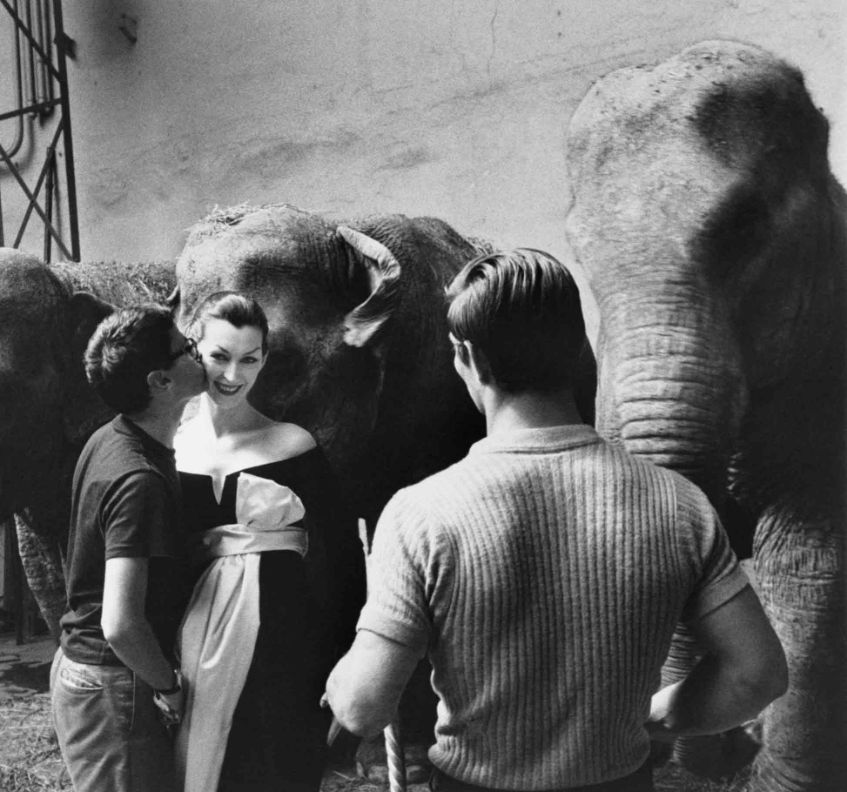
Richard Avedon kissing Dovima while taking ‘Dovima with Elephants’ picture
In 1955, Richard Avedon was assigned to capture some remarkable fall collections in Paris. Carmel Snow, the Editor-in-Chief of Harper’s Bazaar, wrote the cover story and asked Richard to take 15 photographs to illustrate. The most famous picture from this series is Dovima with Elephants, which received a full spread of the magazine. Avedon selected Dorothy Virginia Margaret Juba (nicknamed Dovima for the first two letters of her three given names), for this photoshoot. He used to say that Dovima is “the most amazing and unusual beauty of her time.” Dovima, in turn, recalled that Avedon asked her to do unusual things, but she always knew that his “ideas would always fly.”
The ‘Dovima with Elephants’ photo was among others TOP 100 most influential pictures in human history.
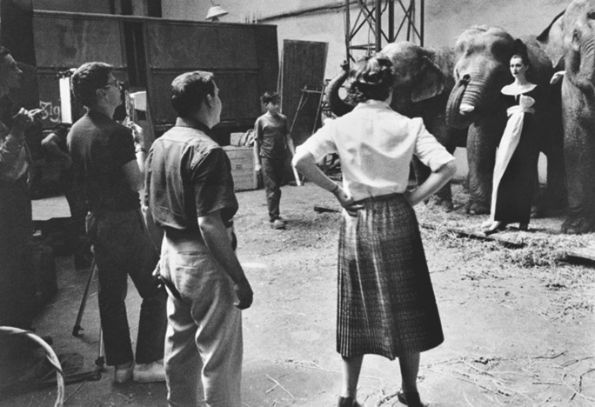
Behind the scene, Dovima with elephants.
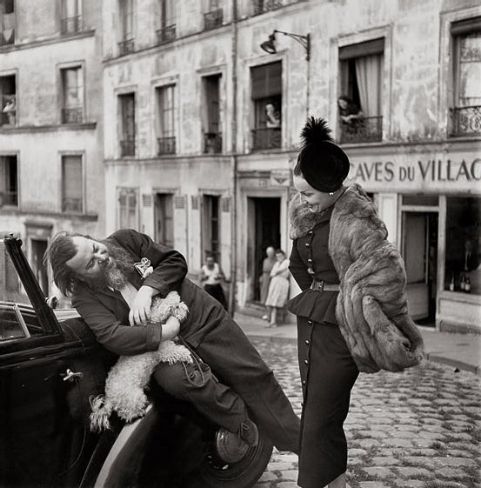
Famous Richard Avedon photos: Christina Berard and Renee, suit by Dior, Le Marais, Paris, August 1947.
Richard Avedon finally gained a reputation as a recognized master: in 1958, the magazine Popular Photography included him in the list of 10 Great Photographers of the World. Alexey Brodovich came back to Avedon’s life when he made the graphic design of his very first “Observations” album, published in 1959.
Brodovich and Avedon stayed in touch for many years after this collaboration. Magazine, exhibitions, and other joint projects forged strong and somewhat emotional teacher-student bonds. Avedon bitterly remarked upon the death of his teacher: “He died without ever praising me.”
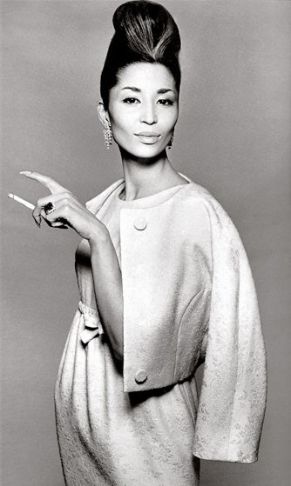
China Machado, suit by Ben Zuckerman, hair by Kenneth, New York, November 1958.

Dovima in Dior, Eiffel Tower, Paris, August 1950
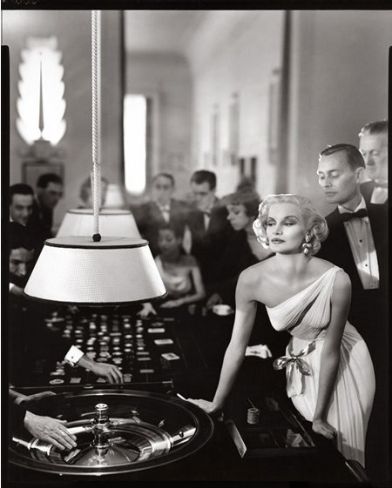
Sunny Harnett, evening dress by Gres, Casino, Le Touquet, Paris, August 1954.
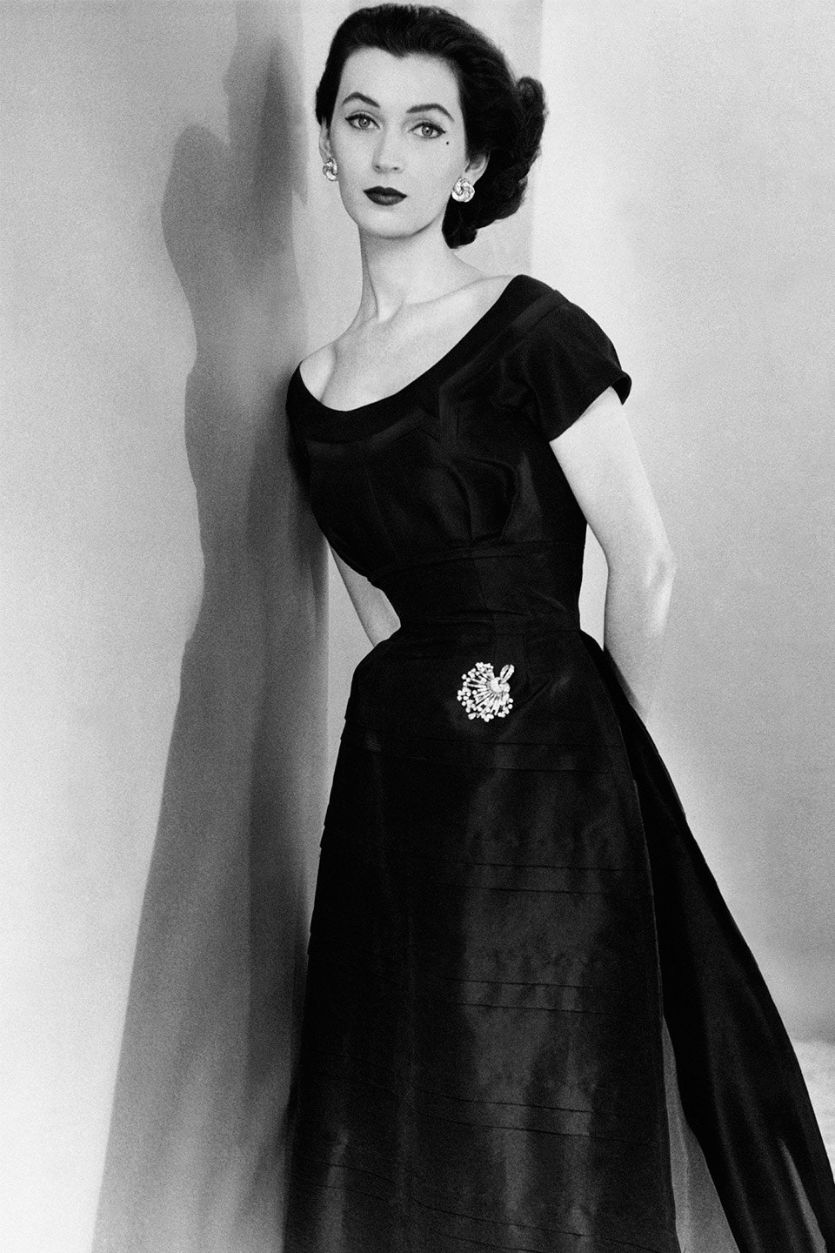
Dovima in the early photoshoot for Harper’s Bazaar
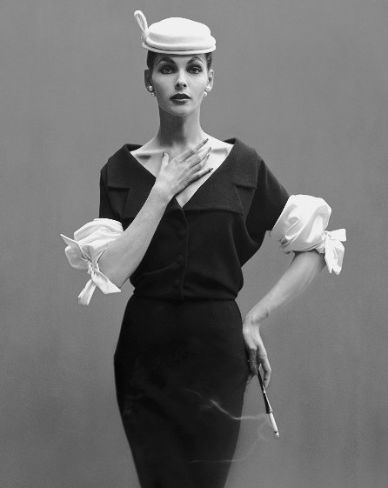
Georgia Hamilton, woold dress by Balenciaga, Paris studio, August 1953.
Сообщение Early fashion photos by Richard Avedon появились сначала на Old Pictures.
]]>Сообщение Life story and the best photos of Alfred Stieglitz появились сначала на Old Pictures.
]]>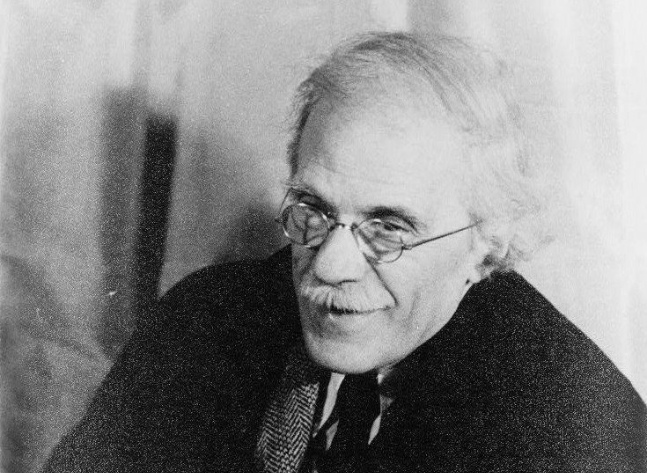
Alfred Stieglitz, 1938
Alfred Stieglitz was born in Hoboken, New Jersey, on the very first day of the year of 1864. His parents are a wealthy Jewish family that emigrated from Germany. Alfred Stieglitz was just eleven when he visited the local photo studio and watched the miracle of photos creation in the darkroom. There’s a legend that Alfred once saw a photographer retouching negatives. The old master explained to the young boy that retouching would make a person on the image look more natural. “You don’t need to do this”, – young Alfred said with no hesitation. Stieglitz’s biographers usually tell this story, to emphasize his legend. We don’t know if this happened for real, but the fact is that Stieglitz never retouched his negatives. Stieglitz’s photo ‘Steerage’ (find its story below) is among other Top 100 most influential pictures in human history.
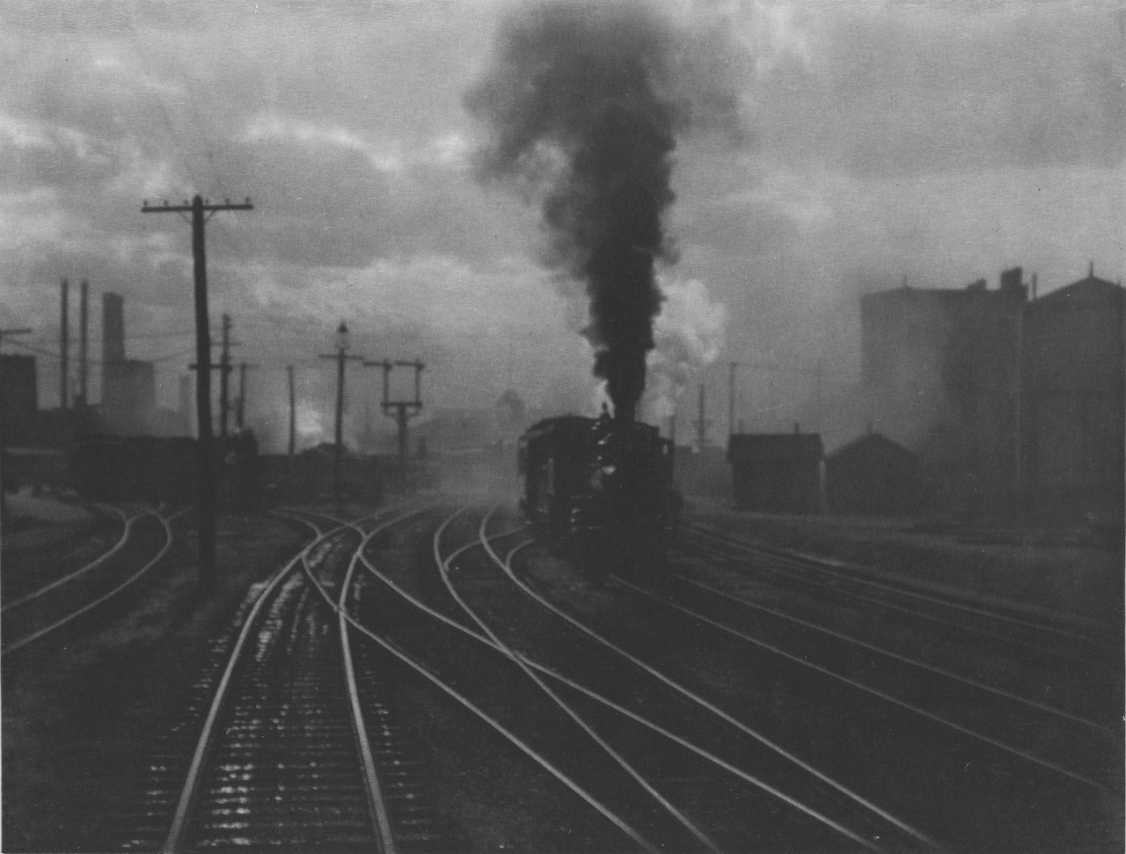
Railways in Berlin, 1886
The Europian inspiration
The US-born Alfred Stieglitz bought his first camera in Berlin, Germany, where he spent his student’s years. He saw the camera on the shop shelf, and it utterly fascinated him. Photography was a student’s hobby, grew into a passion, and finally transformed into a professional career under the mentorship of Herman William Vogel, a professor of photochemistry.
Stieglitz traveled a lot and never left his camera. A young photographer captured peasants, fishers, and residents of the different European cities. People of various professions inspired him just like August Sander with his ‘People of the 20th century.’
Alfred’s creativity was testing the limits of the photo art; he continued his experiments consistently, looking to find his unique approach. He used a 24-hour exposure to take a photo of the car in the dark garage. The only light source was a dim lamp. Photo techniques fascinated Alfred more and more. He continued to develop his style and won silver medals at the competition of amateur photographers, in 1887 in London.
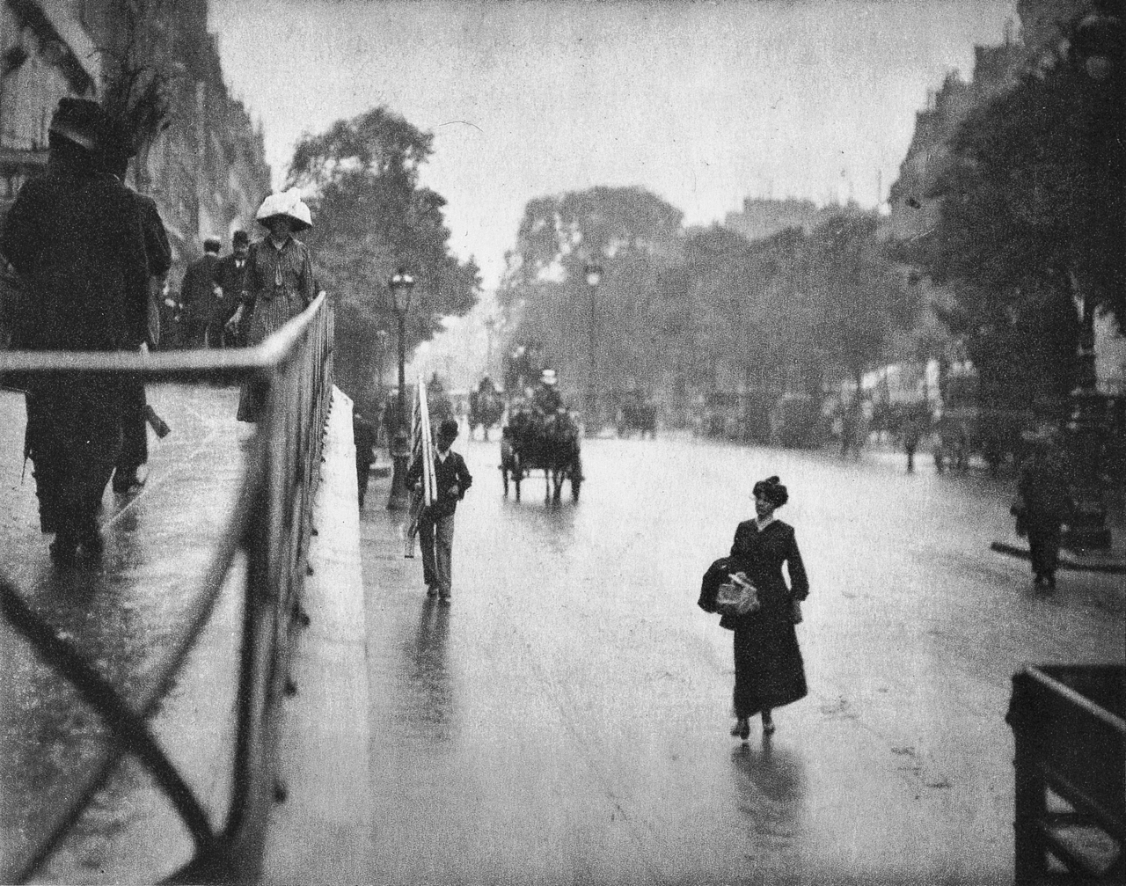
A rainy day in NYC, 1901
Back to the US
Alfred Stieglitz returned to New York, where he became a partner in ‘Photochrome Engraving Company.’ But his passion for photography didn’t go anywhere. Alfred continued his successful photo experiments and won around 150 awards in the US only. A talented workaholic, Stieglitz invested tons of resources and time in each image. He believed that a perfect picture requires a lot of prior research. Alfred studied the environment around the scene, lines of sight, various sources, and types of light. He was waiting for the complete harmony of the light, moving objects and other components to press the shutter on the camera. It’s quite similar to the famous ‘Decisive moment’ method of Henri Cartier-Bresson.
Sometimes Stieglitz was waiting for hours to take a picture. One of Stieglitz’s famous photographs, Fifth Avenue in Winter, was taken on February 22, 1893. The photographer spent three hours in an intense snowstorm until he found the perfect moment for a shot!
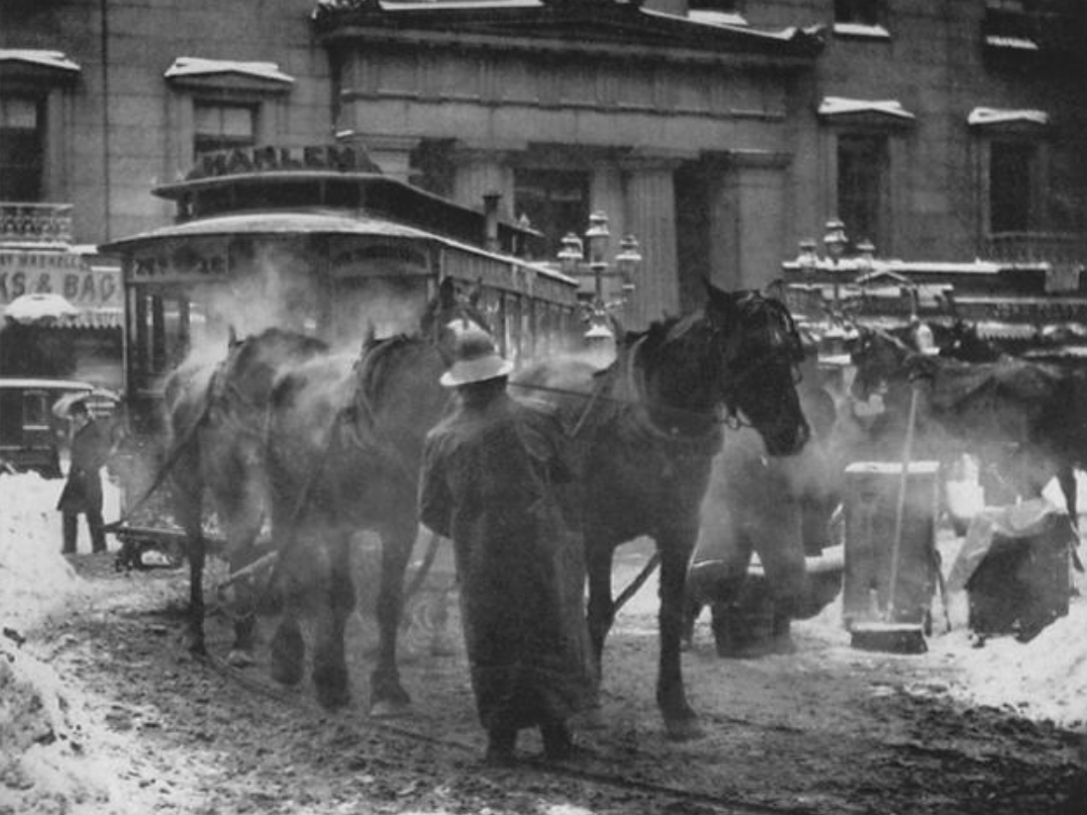
Snowy winter in New York, 1905
In 1893, Alfred Stiglitz took the position of editor-in-chief in ‘American Amateur Photographer’ magazine. His troublesome character led to immediate conflicts with the rest of the office, which considered the new boss to be too strict and autocratic. In 1896 he switched to another well-known magazine, “Camera Notes,” that was linked to the society of photography enthusiasts “The Camera Club of New York.”
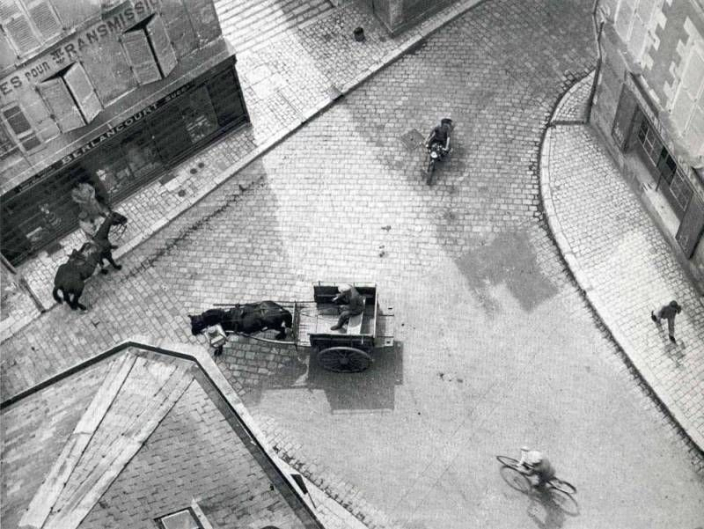
Streets of Upper Manhattan, 1899
This publication suffered severe financial difficulties so that even authors and photographers (with rare exceptions) did not also receive an honorary. Sometimes editor even had to invest his funds to support the publishing. Fortunately, Stieglitz was rich enough to do so. After all, he managed an excellent platform to promote his photo ideas and to popularize himself and his friends as photographers.
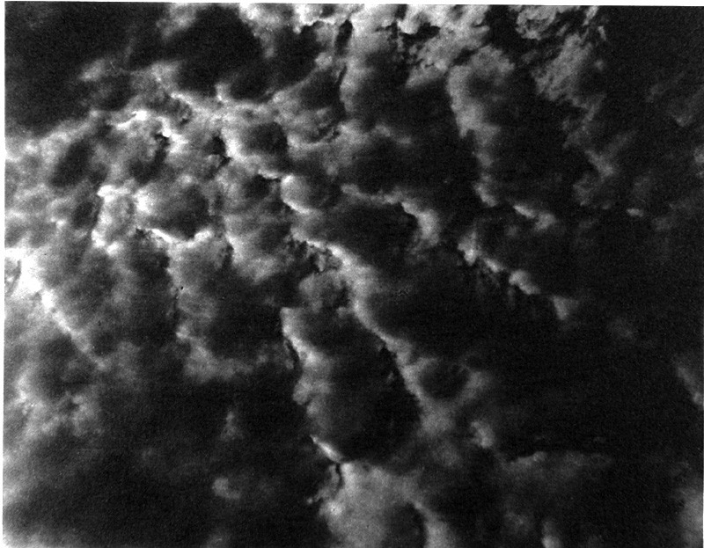
Cloudy skies, 1910
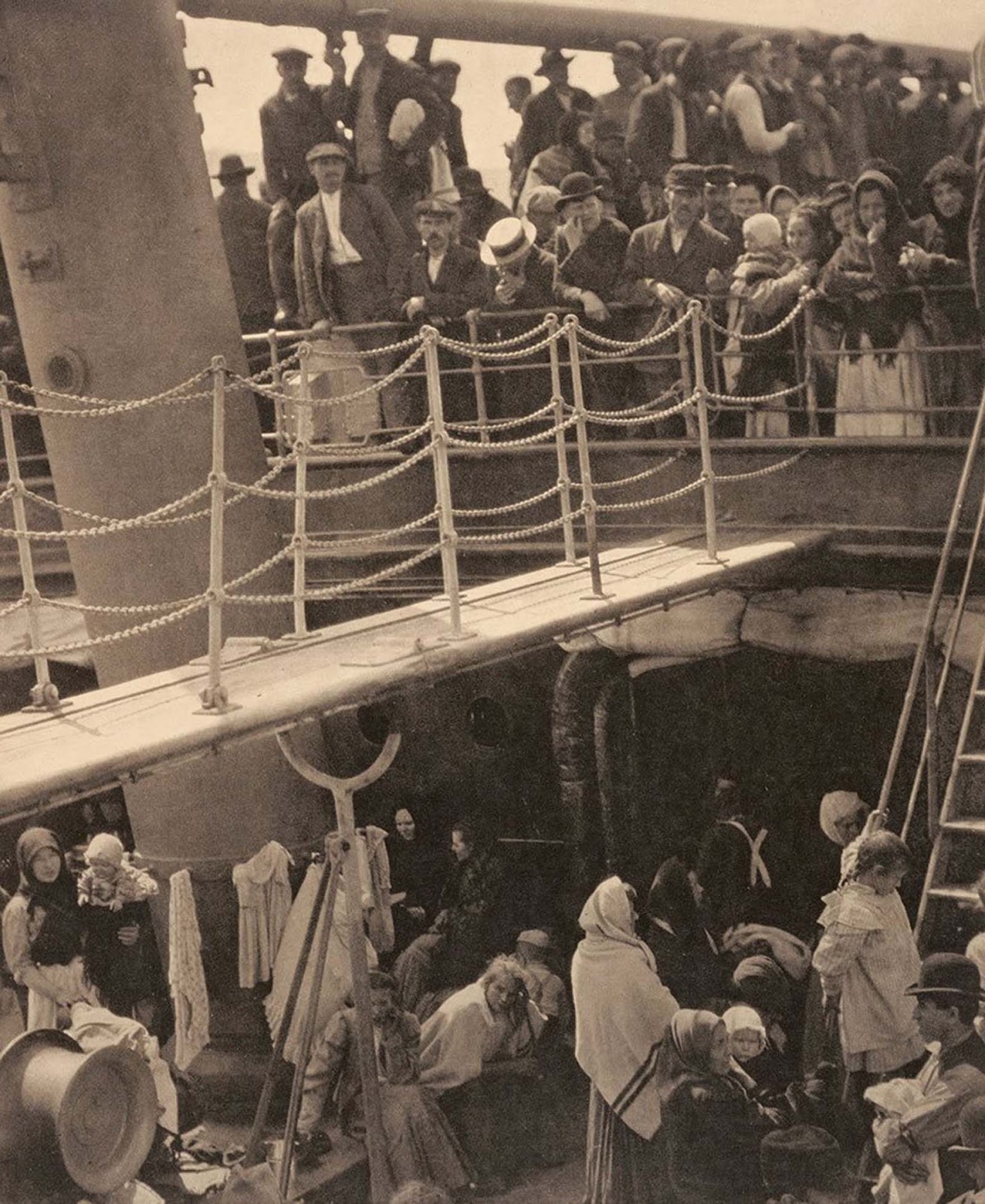
The Steerage, 1907
‘The Steerage’ is an excellent example of his photos of Alfred Stieglitz that he widespread with Camera Club magazine. He captured this image during his voyage to Europe in 1907. Alfred was a kind of partial to social inequality that was a sure thing in the pre-WW1 world. He shared this feeling with many other photographers of the 20th century, like Weegee. But he managed to capture a perfect illustration of the terrible poverty when he left his first-class deck, went to ship’s steerage. There, the shawled and swathed were packed together on the compact lower deck, the minimalistic ship space stresses on overcrowded conditions and visually contrasting with those on the upper deck. “A round straw hat; the funnel leaning left, the stairway leaning right; the white drawbridge, its railings made of chain,” Stieglitz later wrote.
Gallery life
In early 1902, Charles De Kay, director of the National Arts Club, invited Alfred Stieglitz to organize a photo exhibition of contemporary American artists. Without any doubt, Stieglitz supposed that he would solely select the pictures for the show. He was its organizer, after all. But the whole photo community had a different point of view, and Stieglitz had to commit a cheap trick. He delegated the image selection to an initiative group, filled it with loyal photographers, and instructed to take a specific selection of works. Interestingly, this group went down in the history of photography under the name “Photo-Secession.”
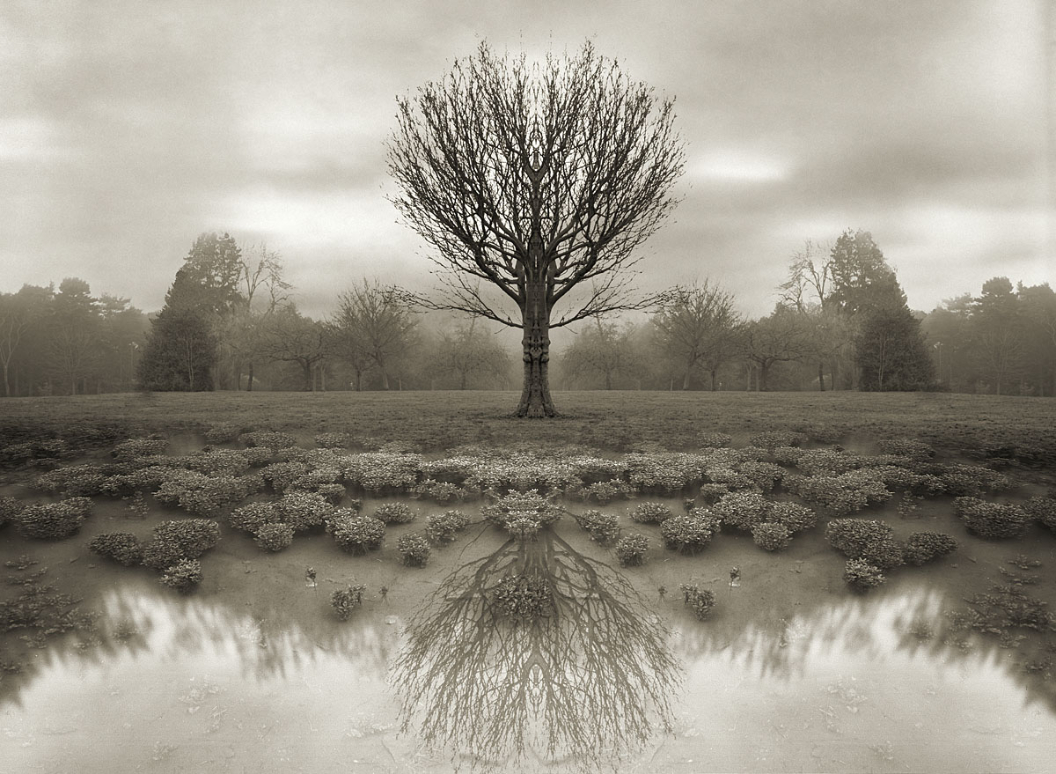
A marvelous tree, a lake of Georgia, 1924
Alfred used this group name for his «Little Galleries of the Photo-Secession » gallery on 5th avenue. It was also known as “Gallery 291”, as it was located in building number 291. The gallery showed not only photographs but also works by contemporary artists, such as Cezanne, Renoir. Matisse, Mans, Rodin, Picasso, Braque …
The gallery had mixed success. The Matisse exposition, which took place in 1908, failed miserably, and even Stieglitz’s friends from Camera Club criticized it. The master’s resentment was so serious that he left the ranks of the group and never returned to it.
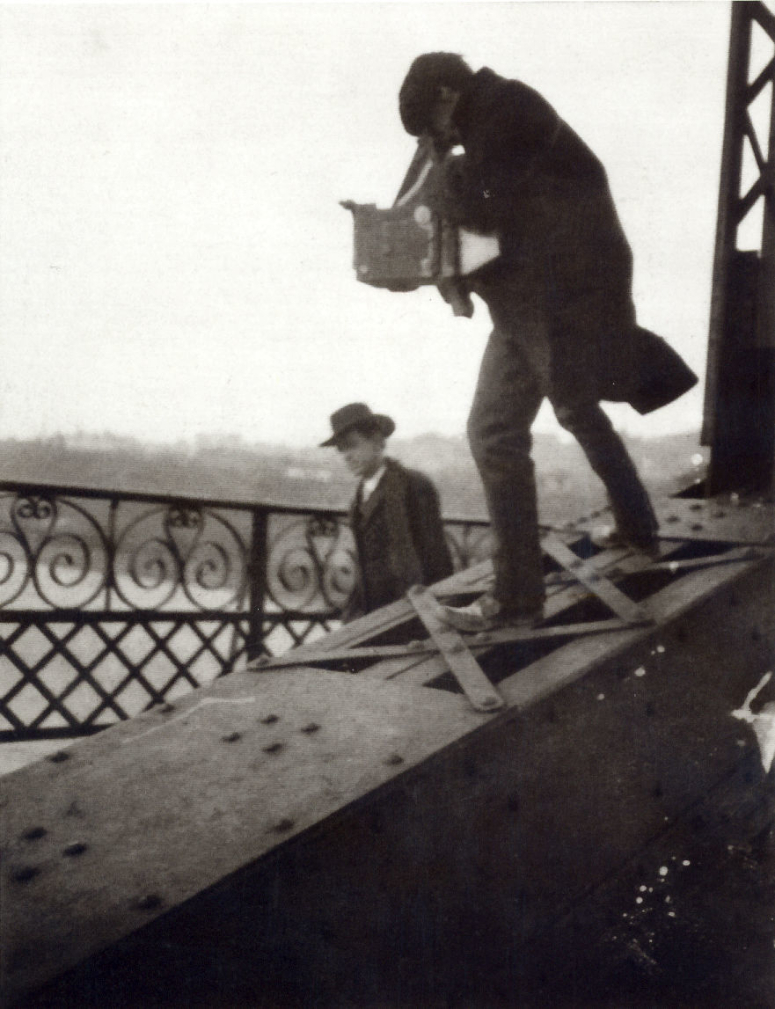
Alfred Stieglitz while taking a photo on a bridge, 1897
Picasso paintings exhibition (1911) was another gallery fail in Alfred Stieglitz’s biography. He recalled with pain that he sold only one drawing of the artist, that he drew when he was 12 years old. Stieglitz acquired it by himself. Alfred was so ashamed when returning unsold paintings to Picasso. They cost 20-30 dollars per one tapestry; the entire collection evaluation was just a couple of thousands of dollars. He offered these paintings to the director of the Metropolitan Museum of Art, and he also refused to purchase Picasso’s works.
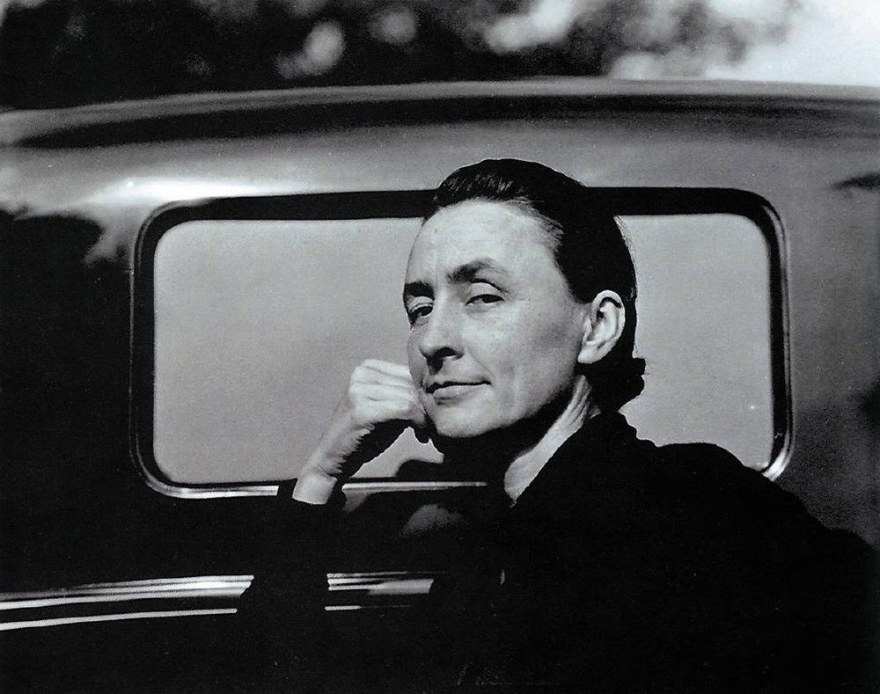
Georgia O’Keeffe, 1933
But you never know when life will surprise you. Stieglitz’s gallery venture wasn’t successful, but it met him with Georgia O’Keefe, his muse, friend, and wife. We’ll cover her influence on Alfred Stieglitz photography in a dedicated section on our site because their collaboration was unbelievably massive. Alfred Stieglitz made some of his best photos inspired by O’Keefe. Let’s just mention that photographer’s biographers agree that he received the second chance when he met Georgia O’Keefe. Alfred’s works got some inner fire, the energetic unseen before. He left hundreds of Georgia’s photos, and many of them are considered to be women portrait classics. Despite various life dramas and marriage nuances, O’Keefe was a person who spent with Stieglitz his last several hours of life. She organized funeral, cremated his body, and buried it in a secret place around the George lake area, where Georgia and Alfred spent their honeymoon.
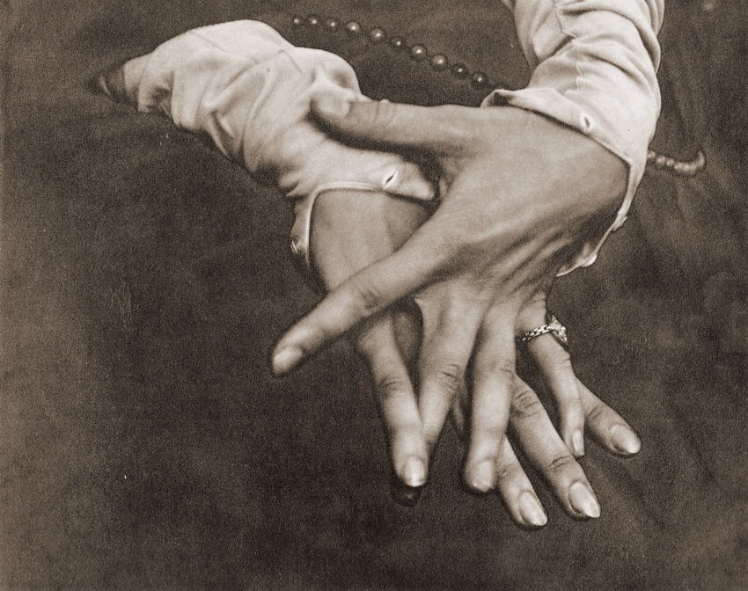
Georgia O’Keeffe’s hands, 1921
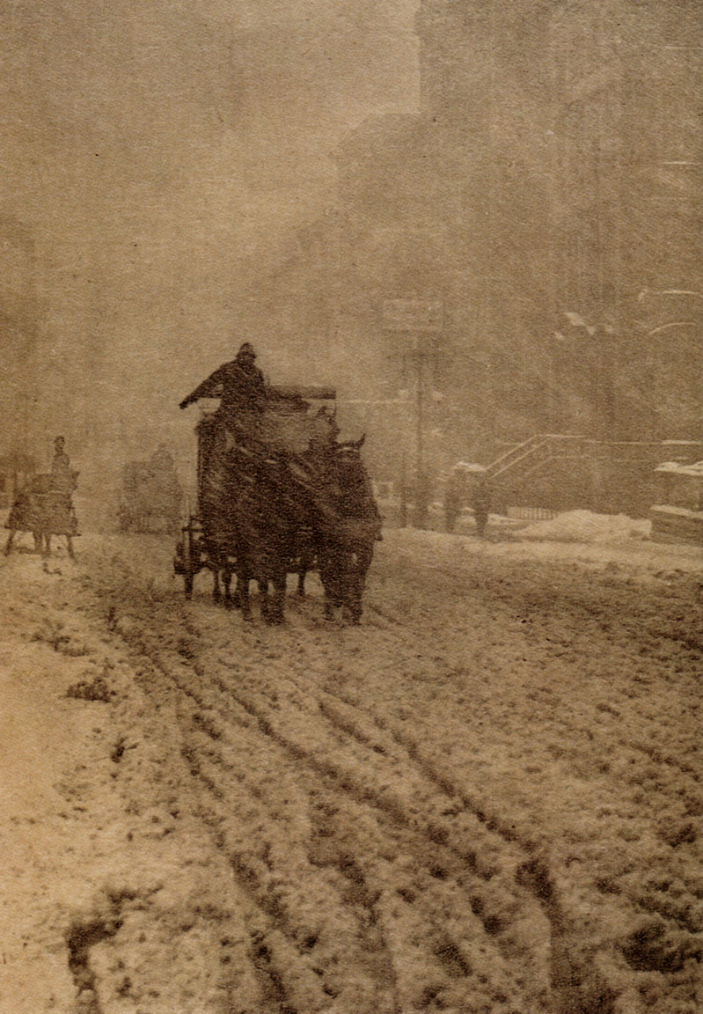
Alfred spent several hours in a snowstorm while he was waiting for a cab to pass by. 1905

Swimmer, 1913
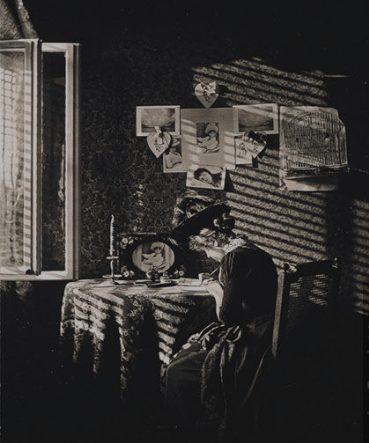
A woman writing a letter, 1899

A sleeping craftsman during a break in New York, 1908
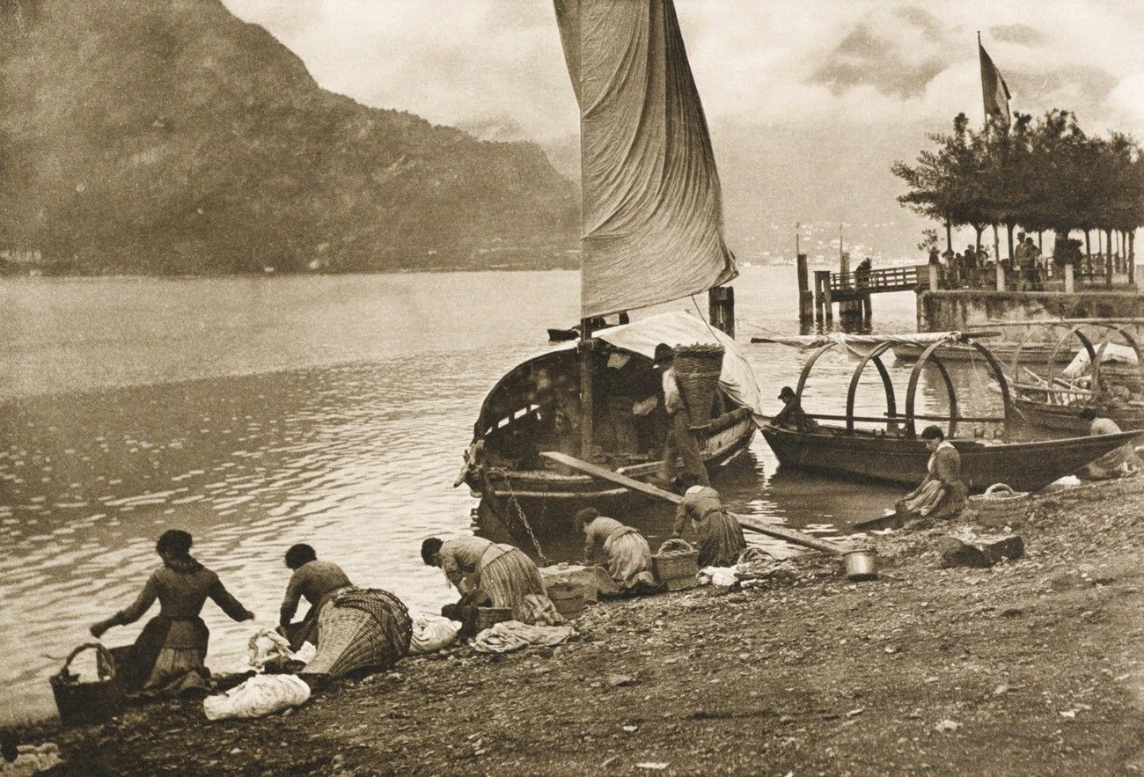
Сообщение Life story and the best photos of Alfred Stieglitz появились сначала на Old Pictures.
]]>Сообщение Harlem Renaissance in photos of James VanDerZee появились сначала на Old Pictures.
]]>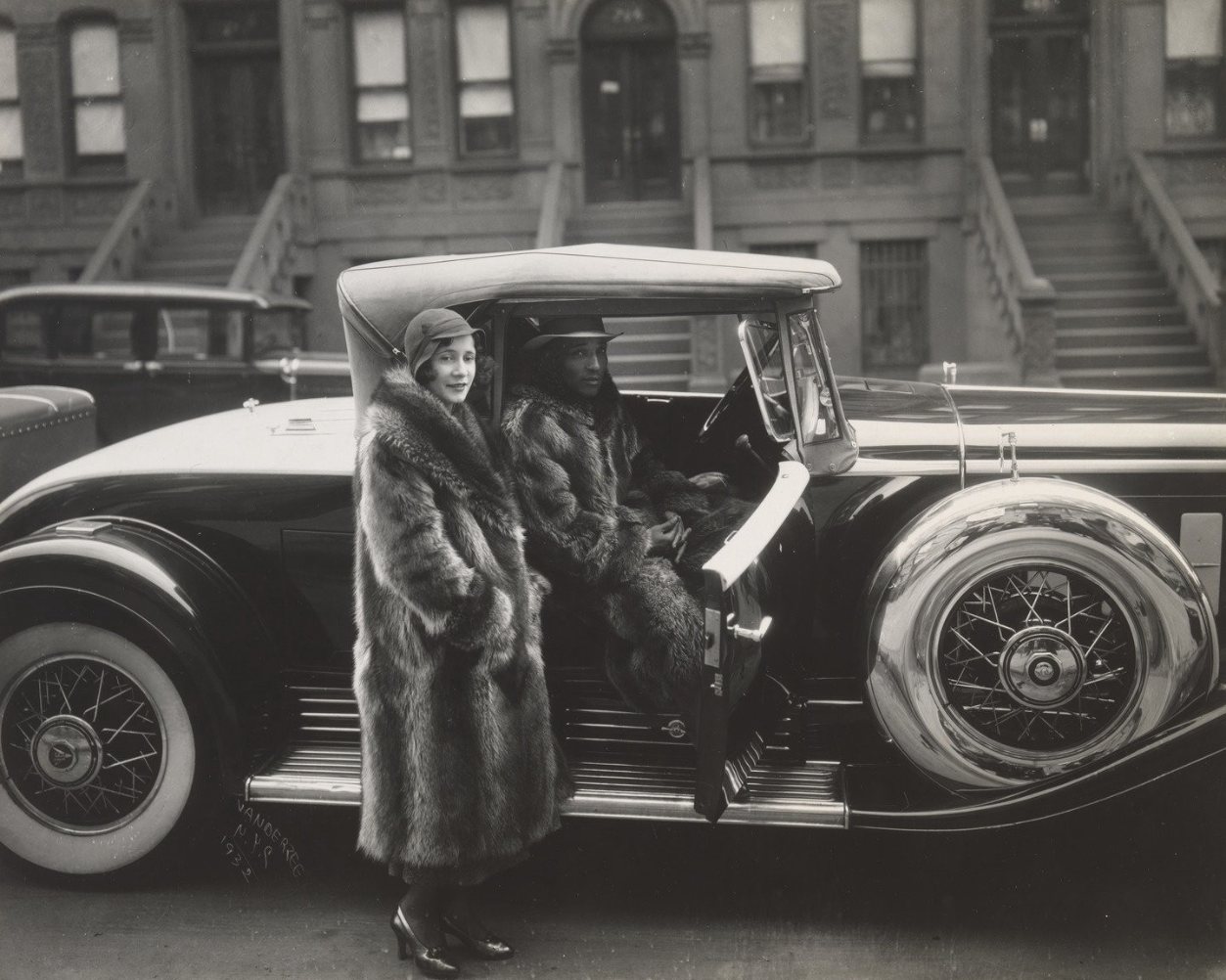
The famous ‘Couple In Raccoon Coats’ showed that black people could make the American Dream come true, 1932
If you want to know what Harlem of the 20s and 30s was, you should inspect photos of James VanDerZee. The honored photographer, whose studio was at 135th street, witnessed the booming Harlem growth in pre- and post-depression years when this area became the black heart of New York City.
VanDerZee opened his studio in 1917 and continued to capture the fascinating moments of Harlemers’ lives for more than 60 years. He attentively portrayed district dwellers, captured the bright and grim moments of everyday routine, and showed and widespread something that was unpublic: the black middle-class representatives who made an American dream come true.
More iconic photos:
The Molotov man: the Nicaragua photos of Susan Meiselas
Yosemite and the best of Carleton Watkins photos
VanDerZee made his famous picture ‘Couple In Raccoon Coats’ in the darkest days of the Great Depression, showing that black people in America can be successful, and they deserve photographers’ attention. Yes, it wasn’t a common thing to focus on blacks as main photo subjects back in the 20s and 30s. Also, ‘Couple In Raccoon Coats’ photo is among other Top 100 most influential pictures in human history. Even famous Weegee paid much more attention to social inequality within white people, somehow missing other skin colors.
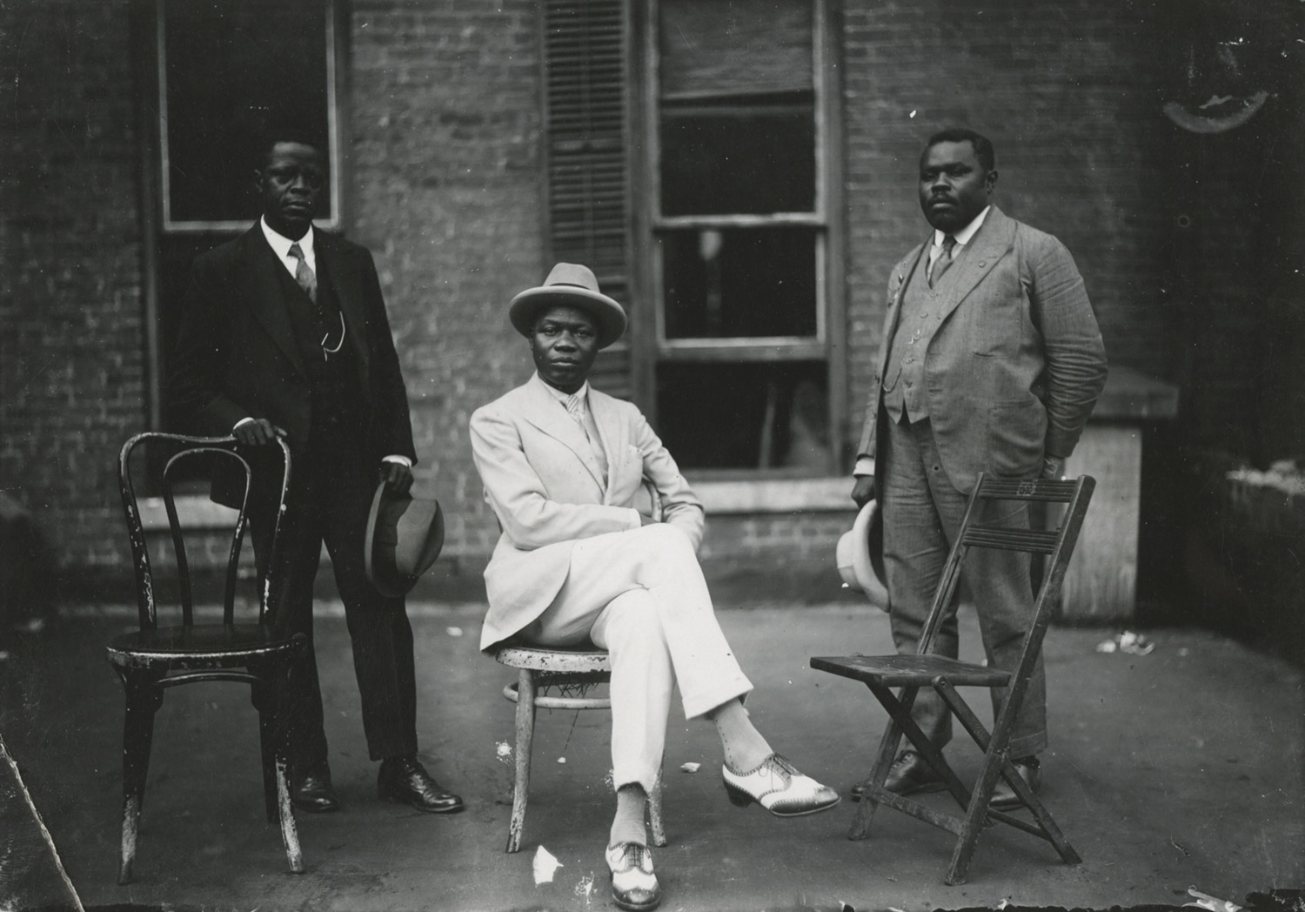
Wealthy black men of Harlem, 1931
VanDerZee lovely pictured respectful African Americans in various places — the church groups and social clubs, sports events, weddings and funerals, well-known personas, and nobodies who shaped the black community of Harlem. Photographer dreamt of showing the attractiveness of black people of Harlem to the outer world, and he reached his aim in late 1968 when MET curators noticed his works and took them for the grand exhibition.
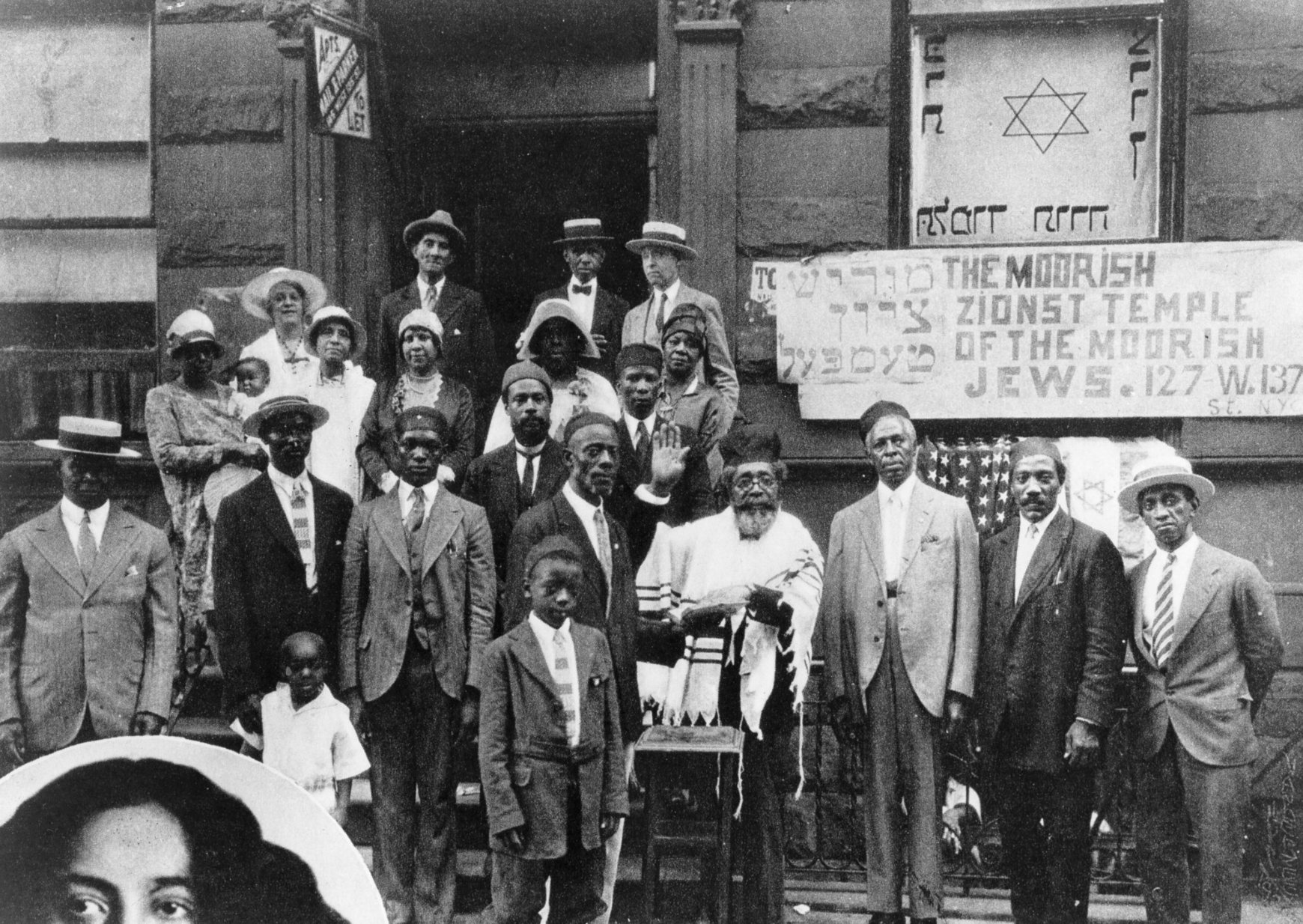
Black Jews of Harlem, 1929
VanDerZee put diligent efforts to present black people of NYC most positively. Retouching techniques enhanced their likenesses and even postmortem pictures (yep, it was pretty popular on those days) looked a bit fancier than they used to be.
James VanDerZee witnessed a new era of Harlem, with its jazz, poetry, art, and literature all flourished, and his photos captured its most glorious moments. He was an eye of the Harlem Renaissance, and we have a unique opportunity to look through his eyes with his brightest photos.
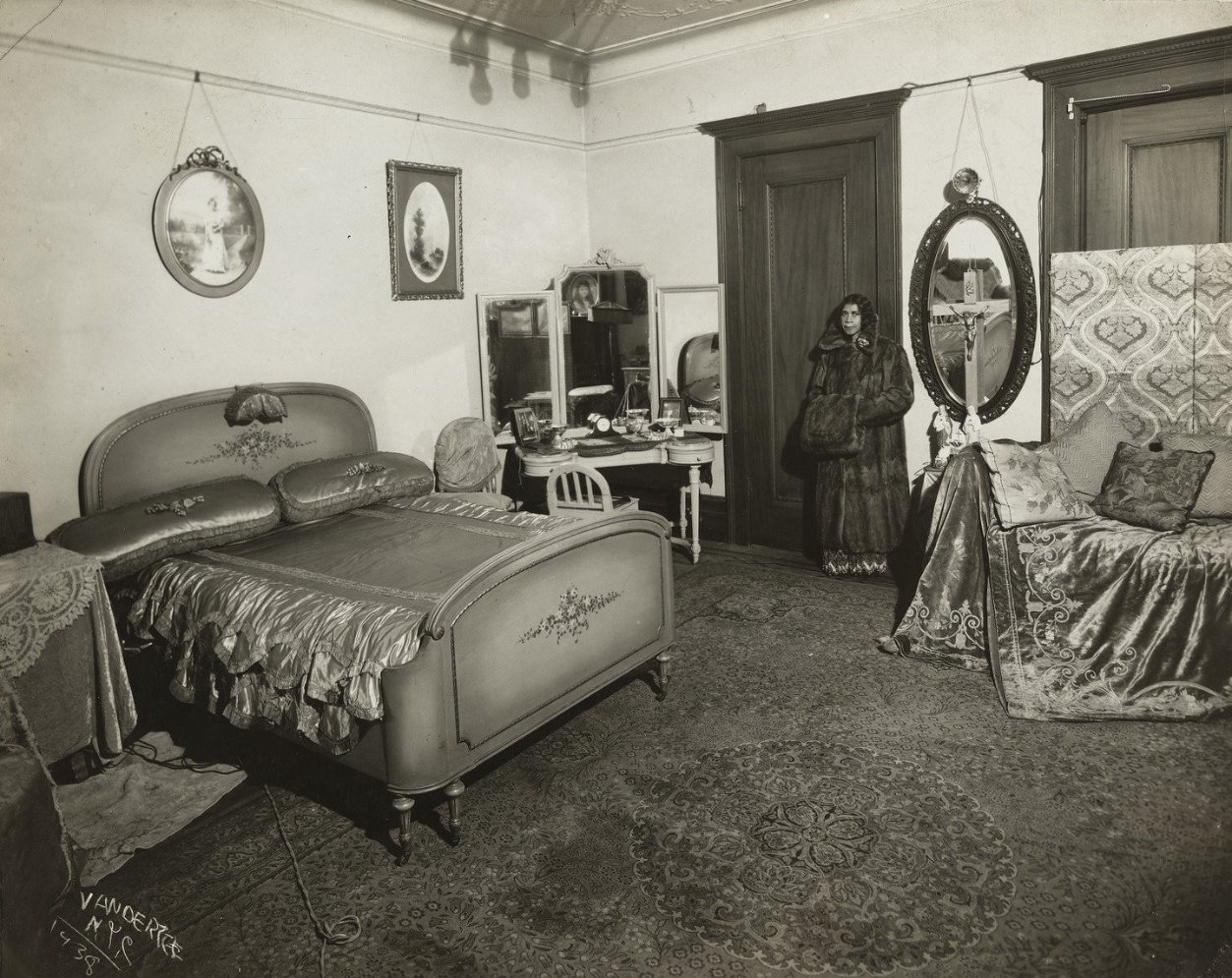
The Heiress, 1938
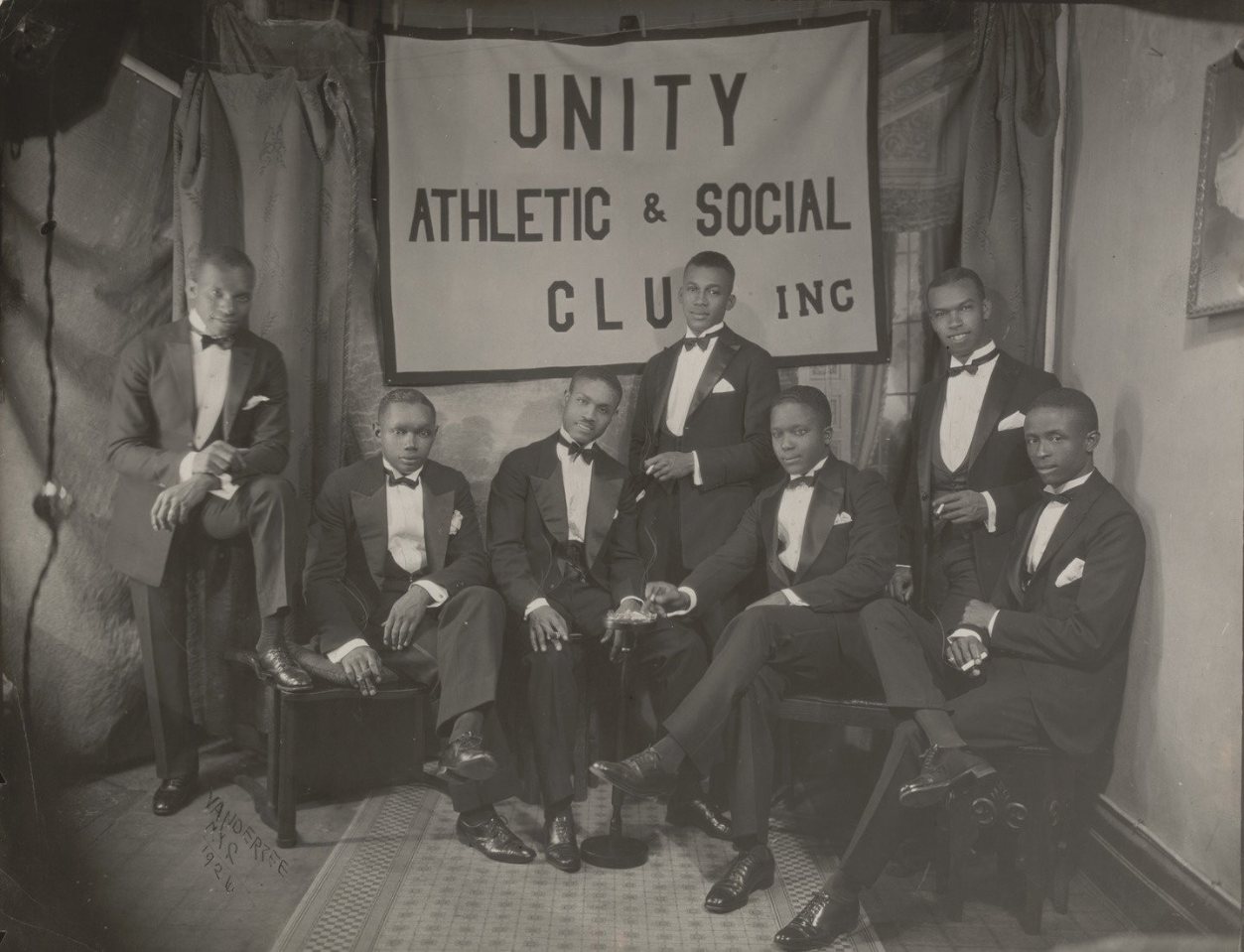
Unity Athletic and Social Club, Inc., 1926.
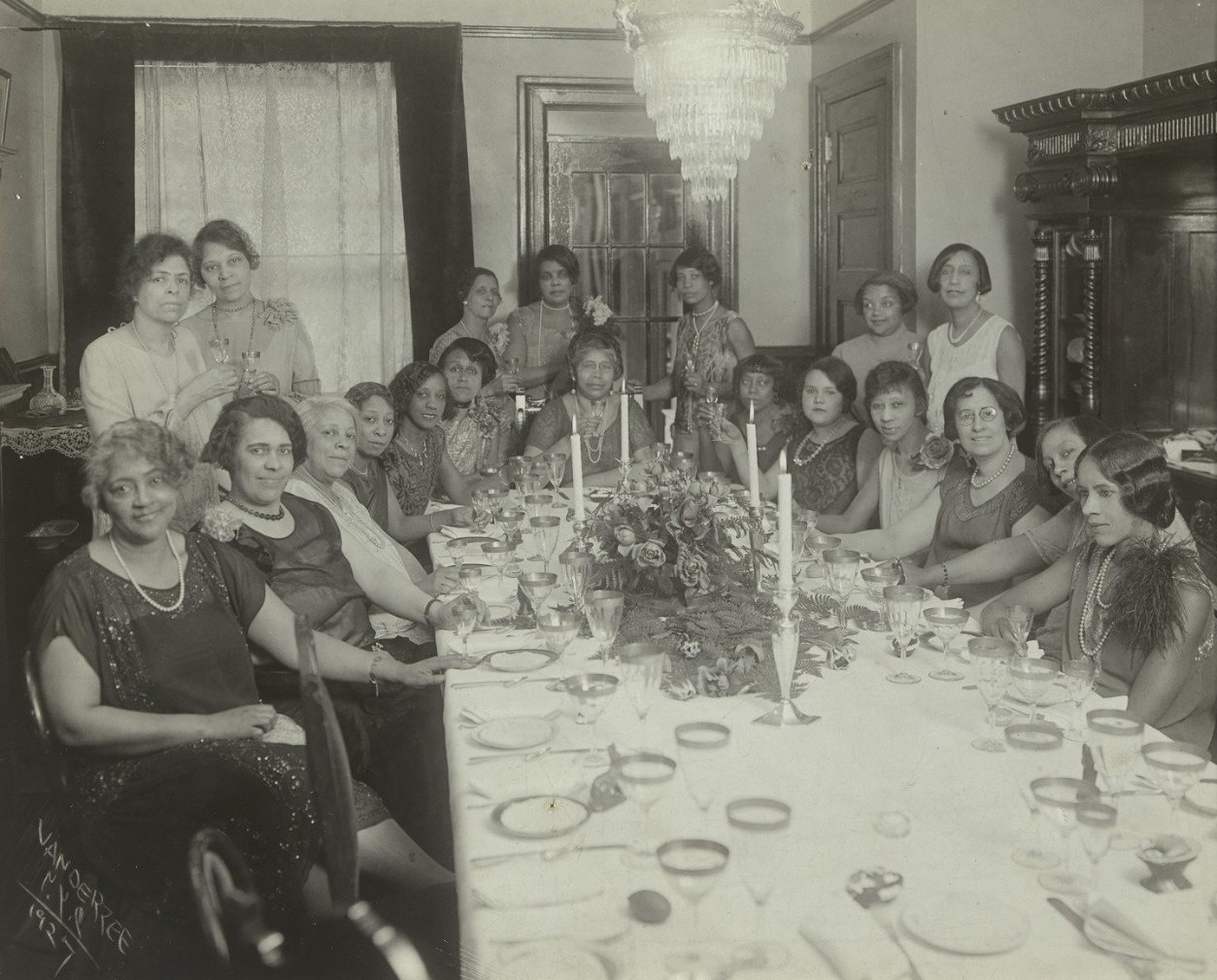
Harlem Society Tea, 1927.
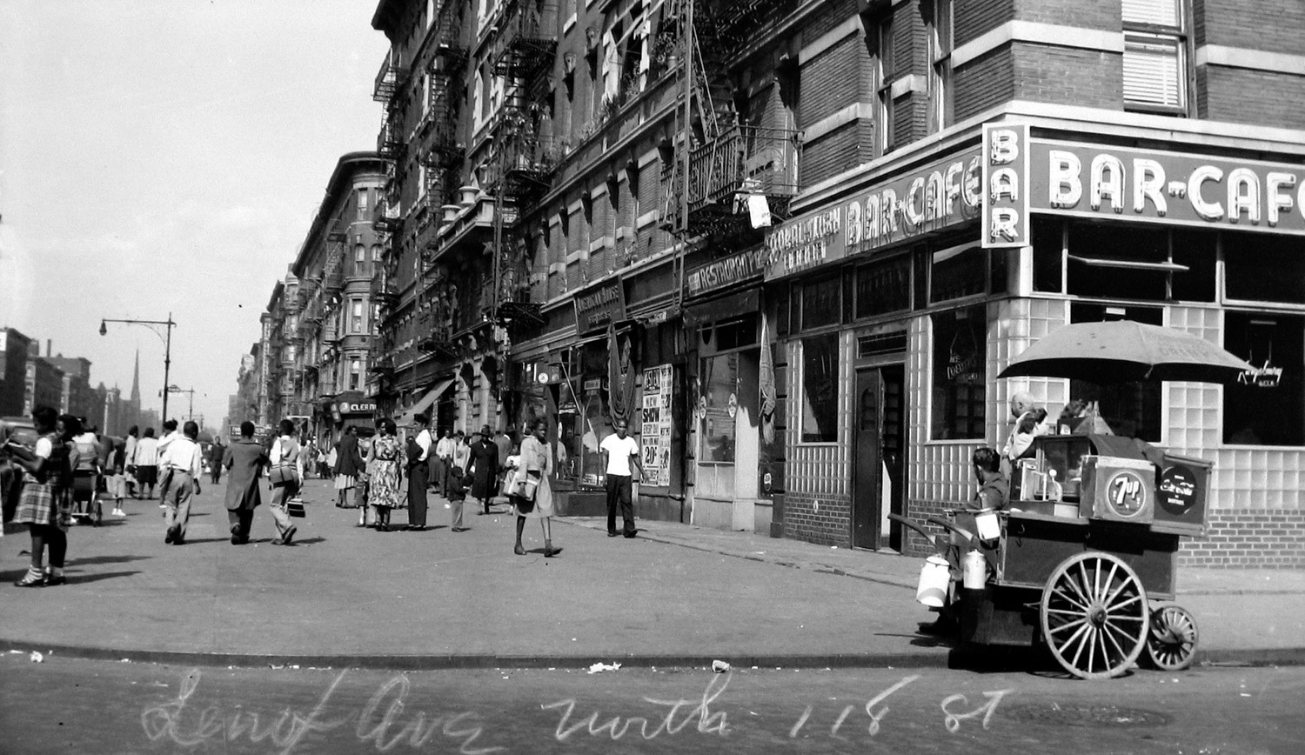
The heart of the Harlem – Capital Grill Restaurant. 1940
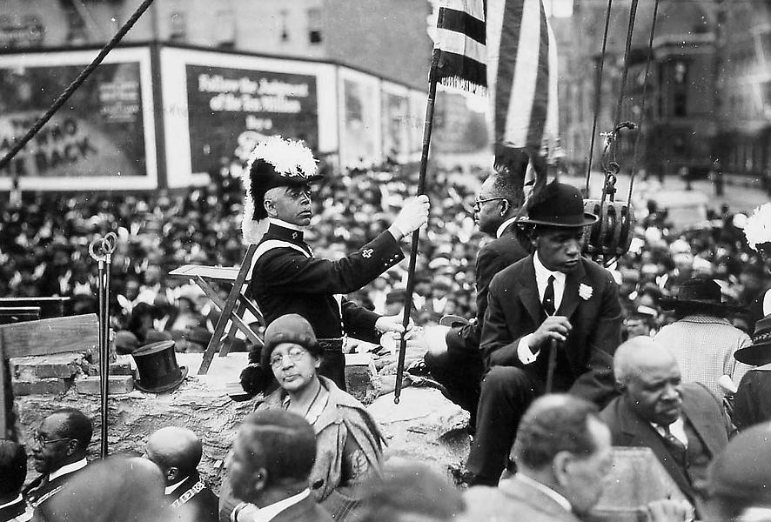
Street performance, Harlem 1926
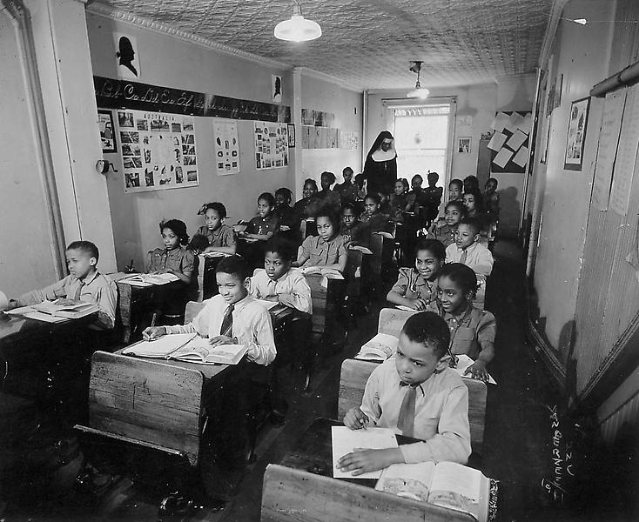
Classroom in a Harlem’s school, 1941

The great photographer VanDerZee, 1977
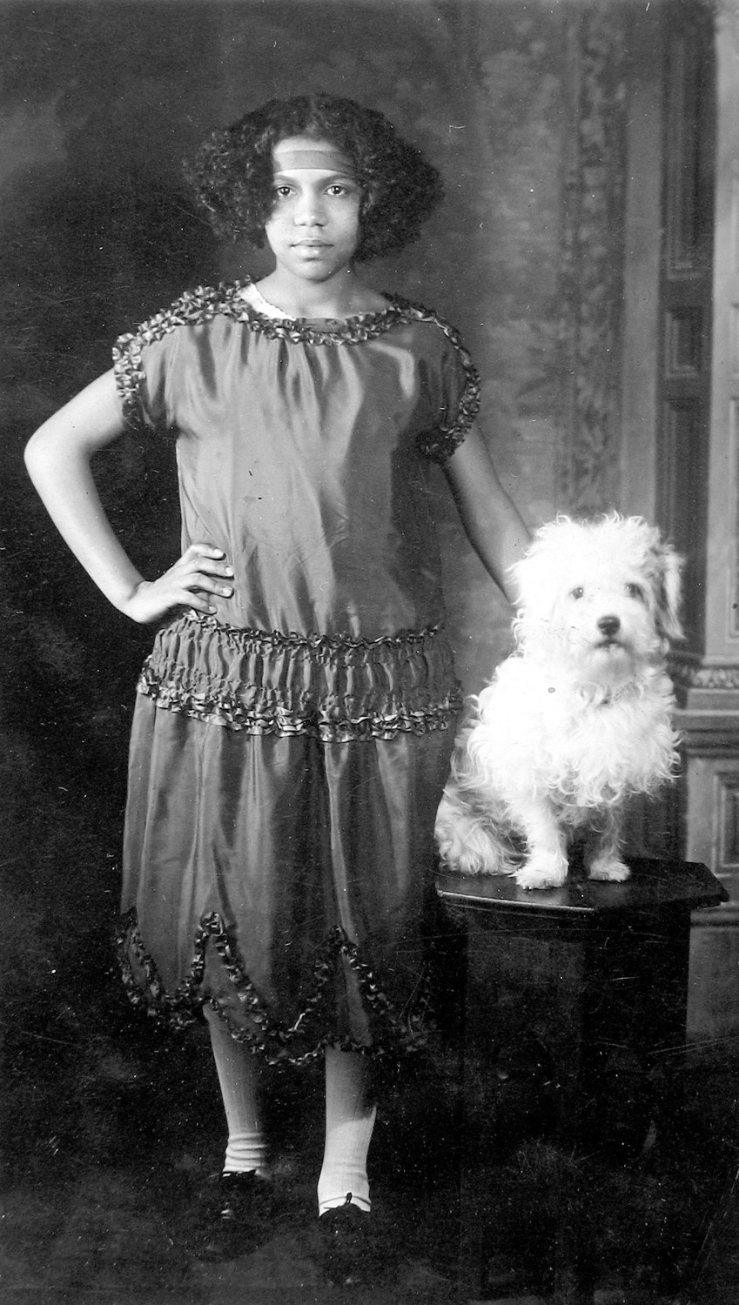
Young girl with a dog
Сообщение Harlem Renaissance in photos of James VanDerZee появились сначала на Old Pictures.
]]>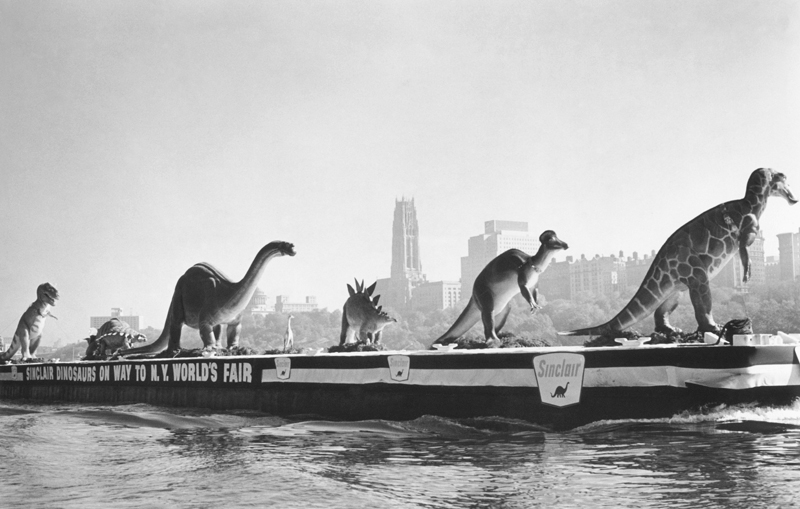
Сообщение Dinosaurs being transported to New York City World’s fair, 1964 появились сначала на Old Pictures.
]]>Сообщение A workman on the framework of the Empire State Building, 1930 появились сначала на Old Pictures.
]]>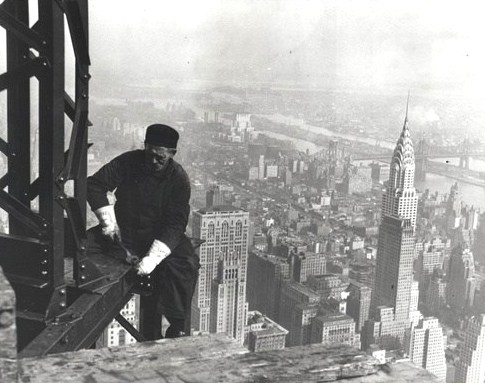
This man did his work well. Empire State Building passed through many incidents that proved it. For example, this airplane crash accident in 1945.
Сообщение A workman on the framework of the Empire State Building, 1930 появились сначала на Old Pictures.
]]>